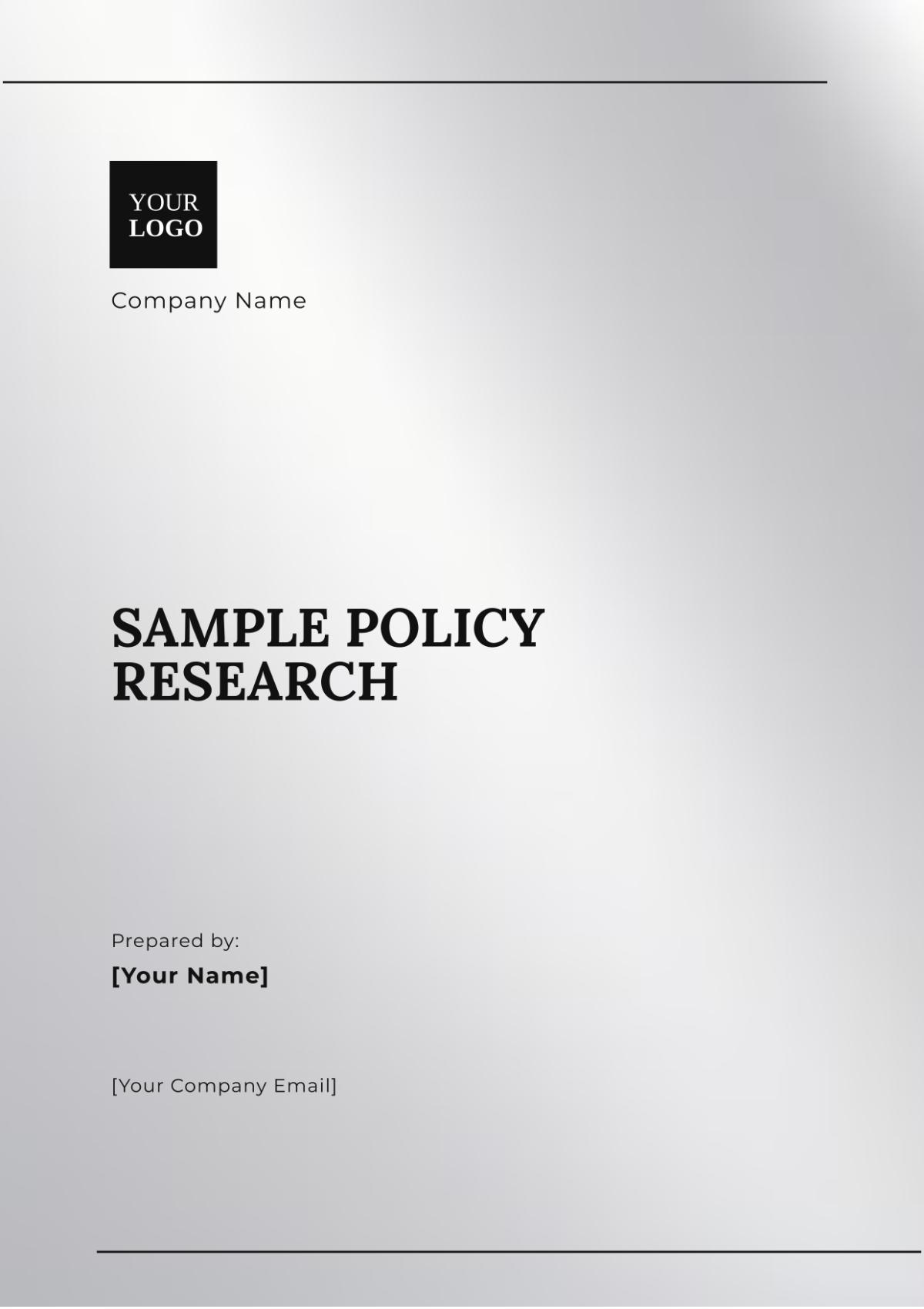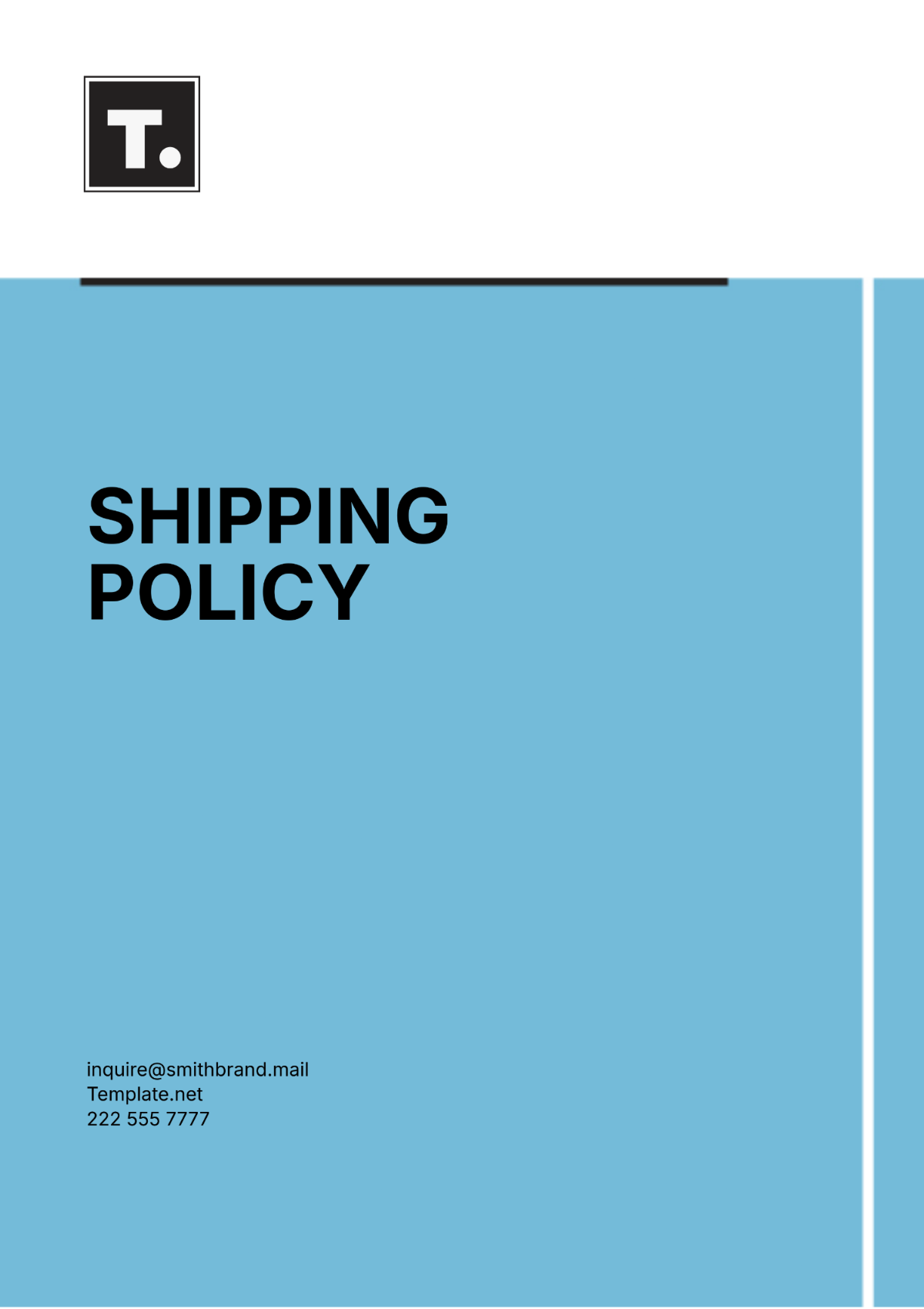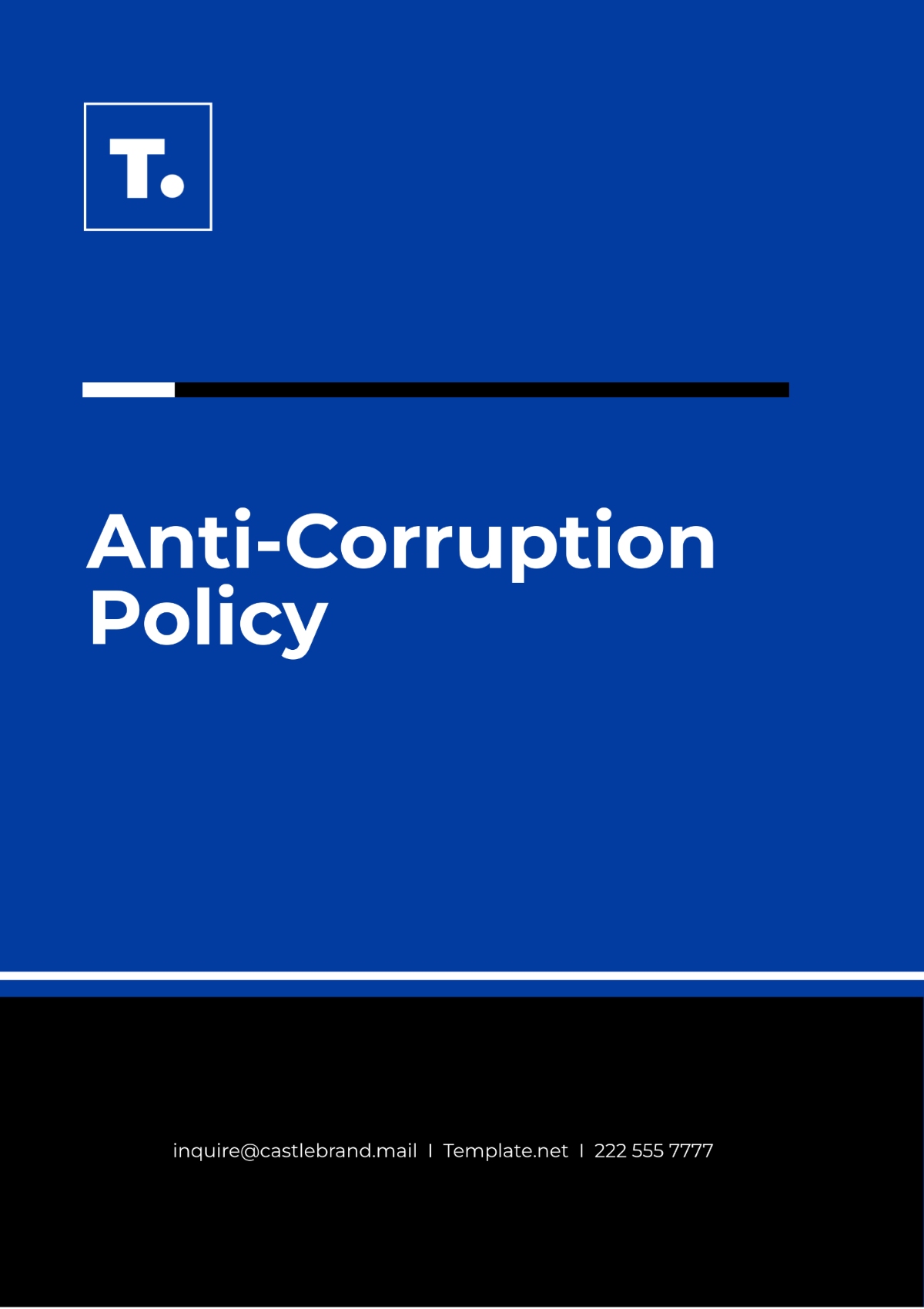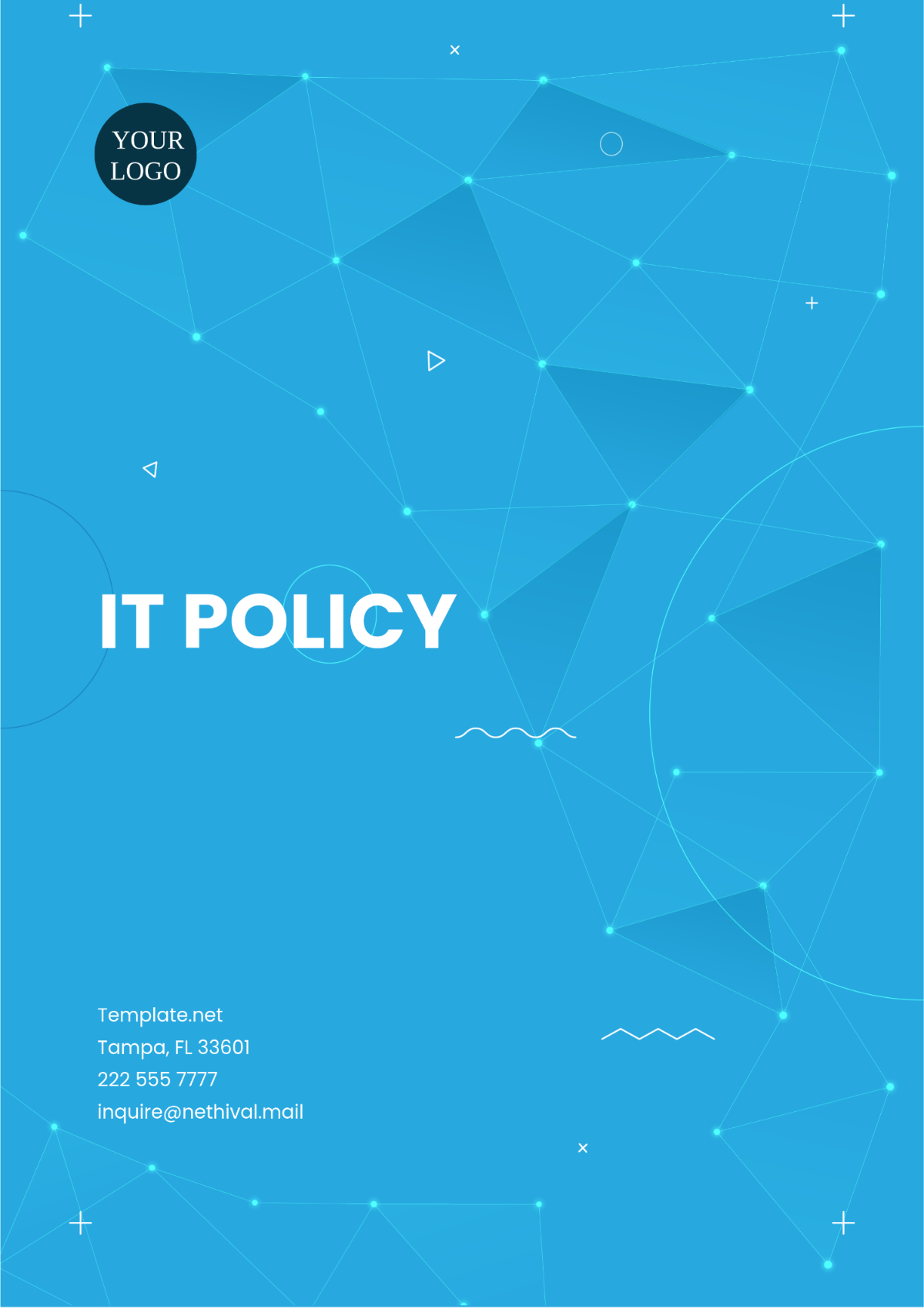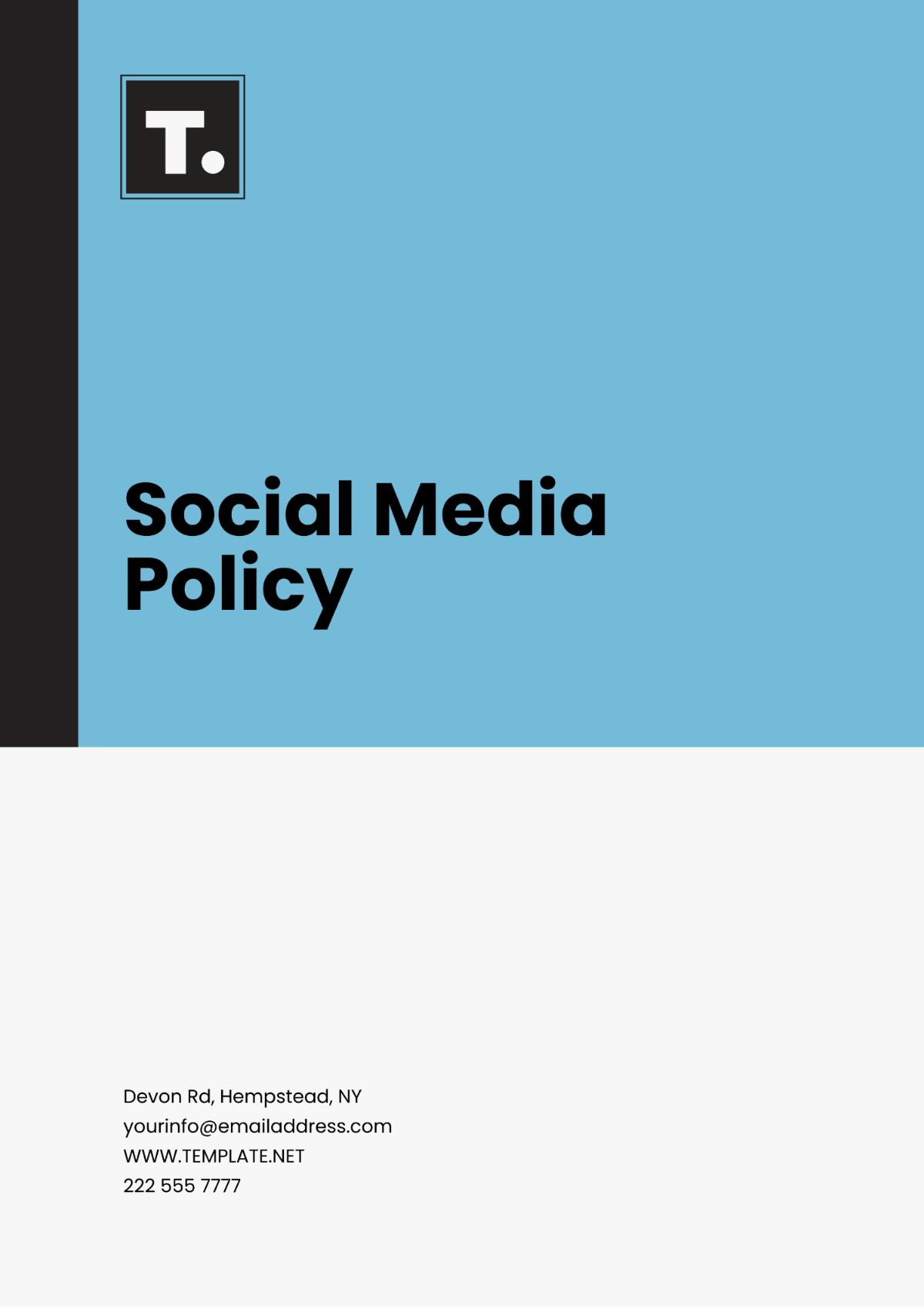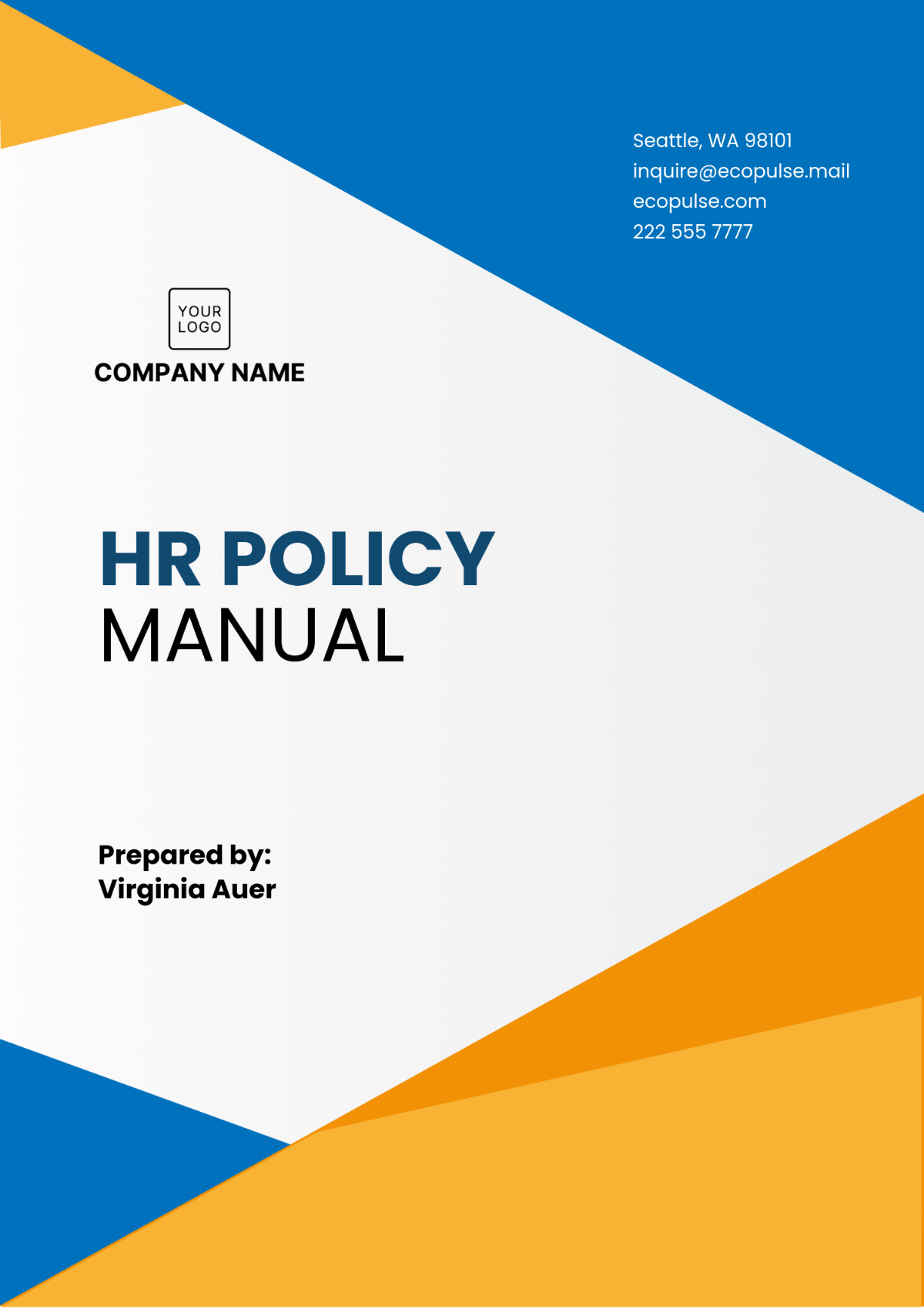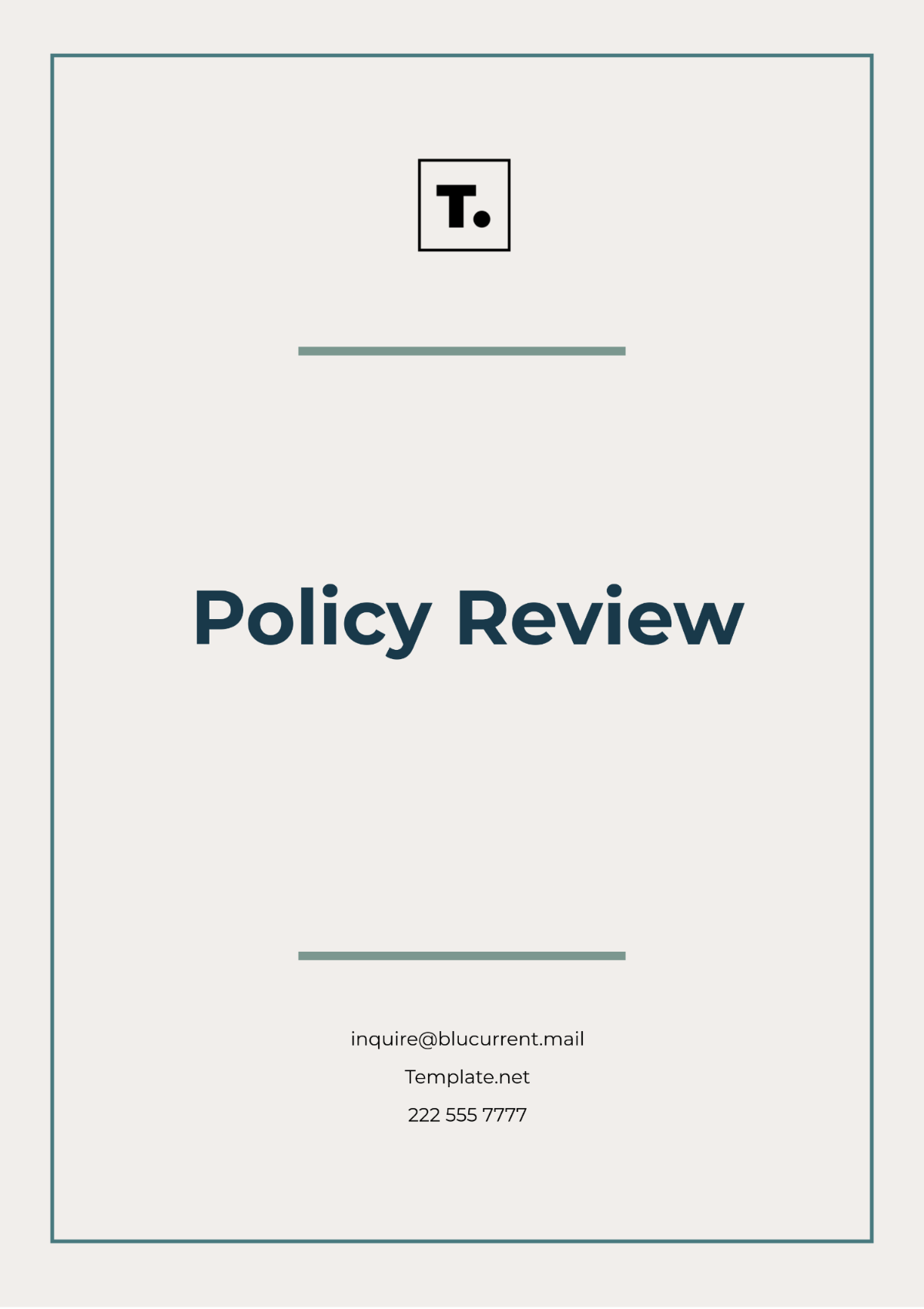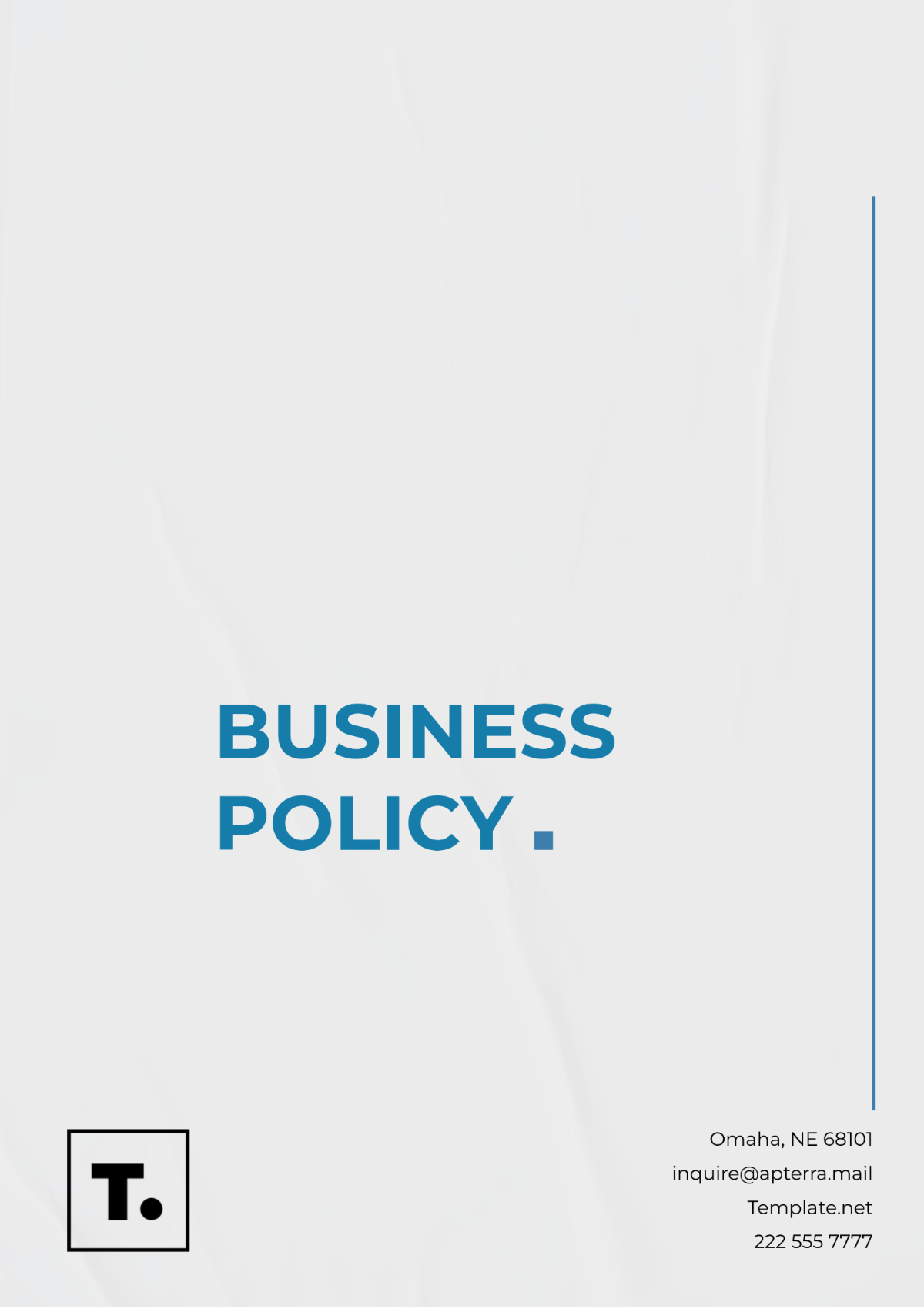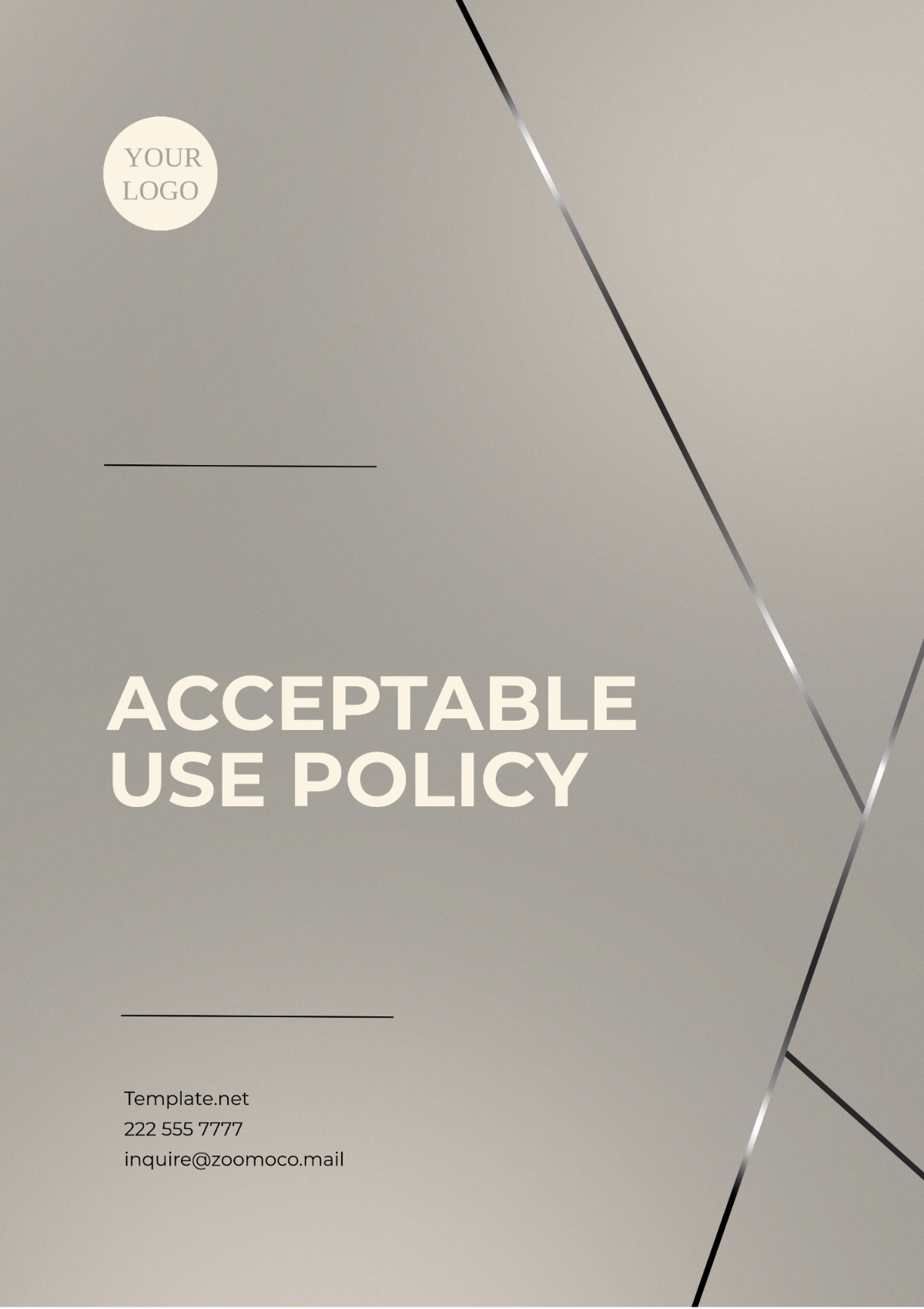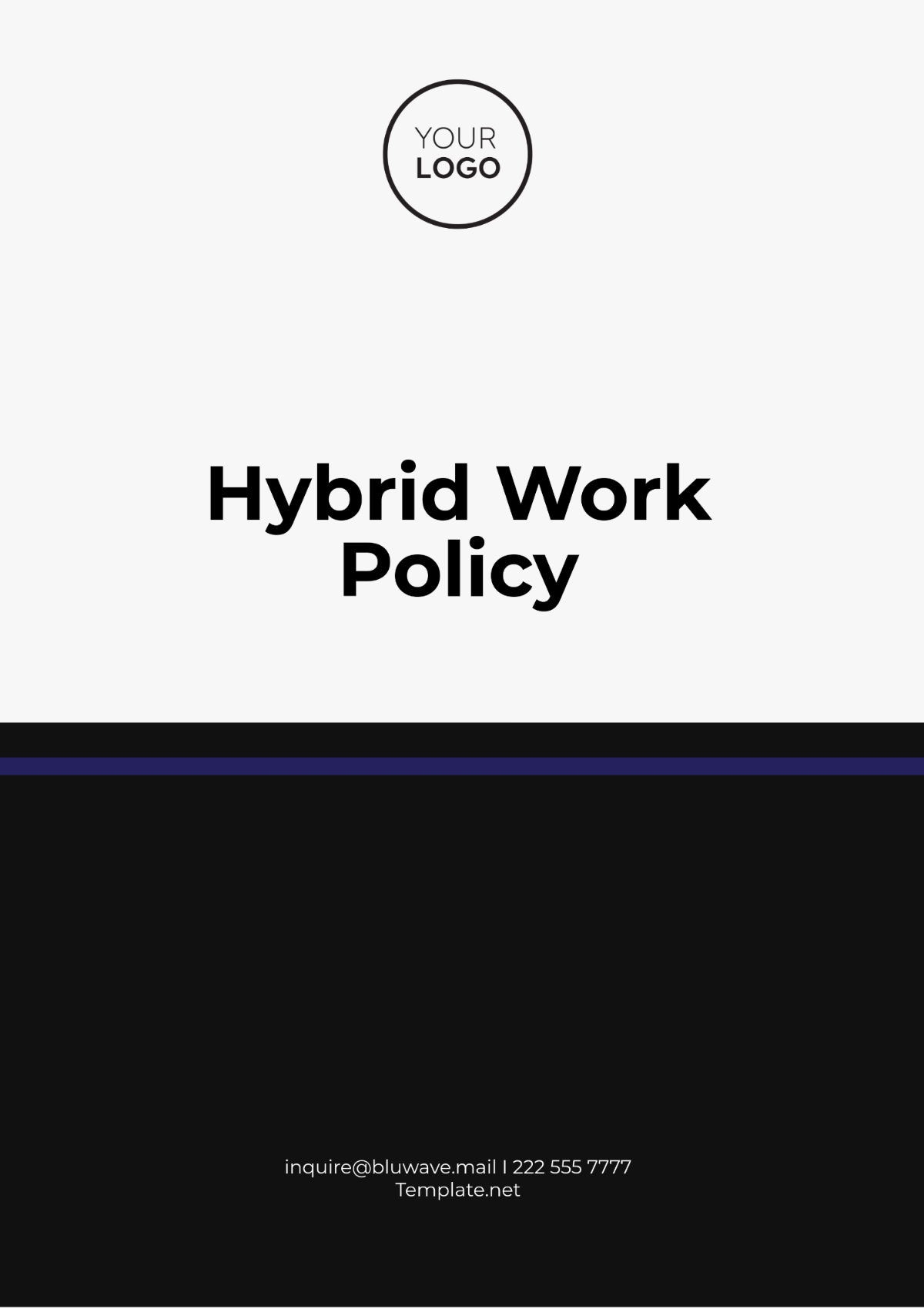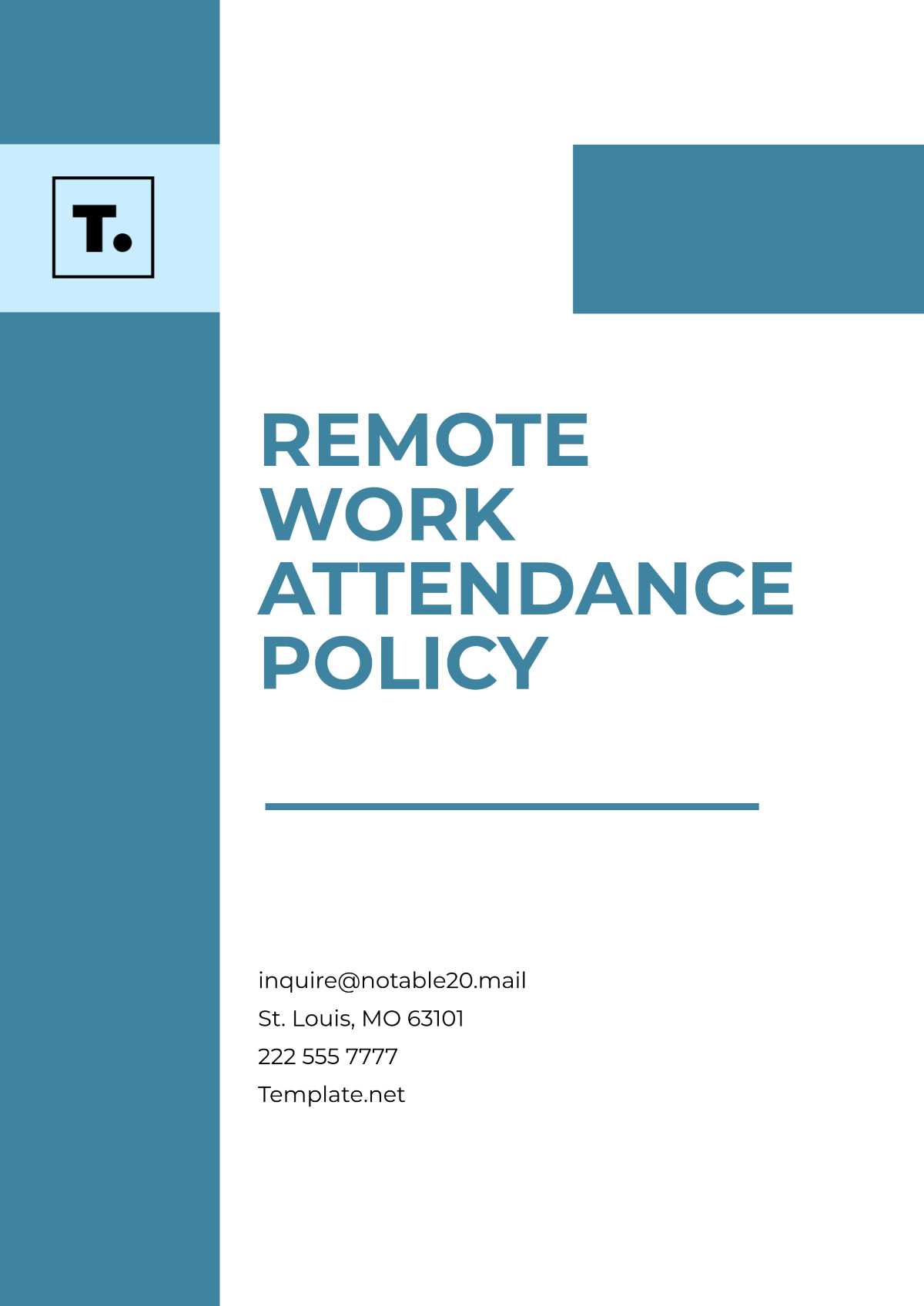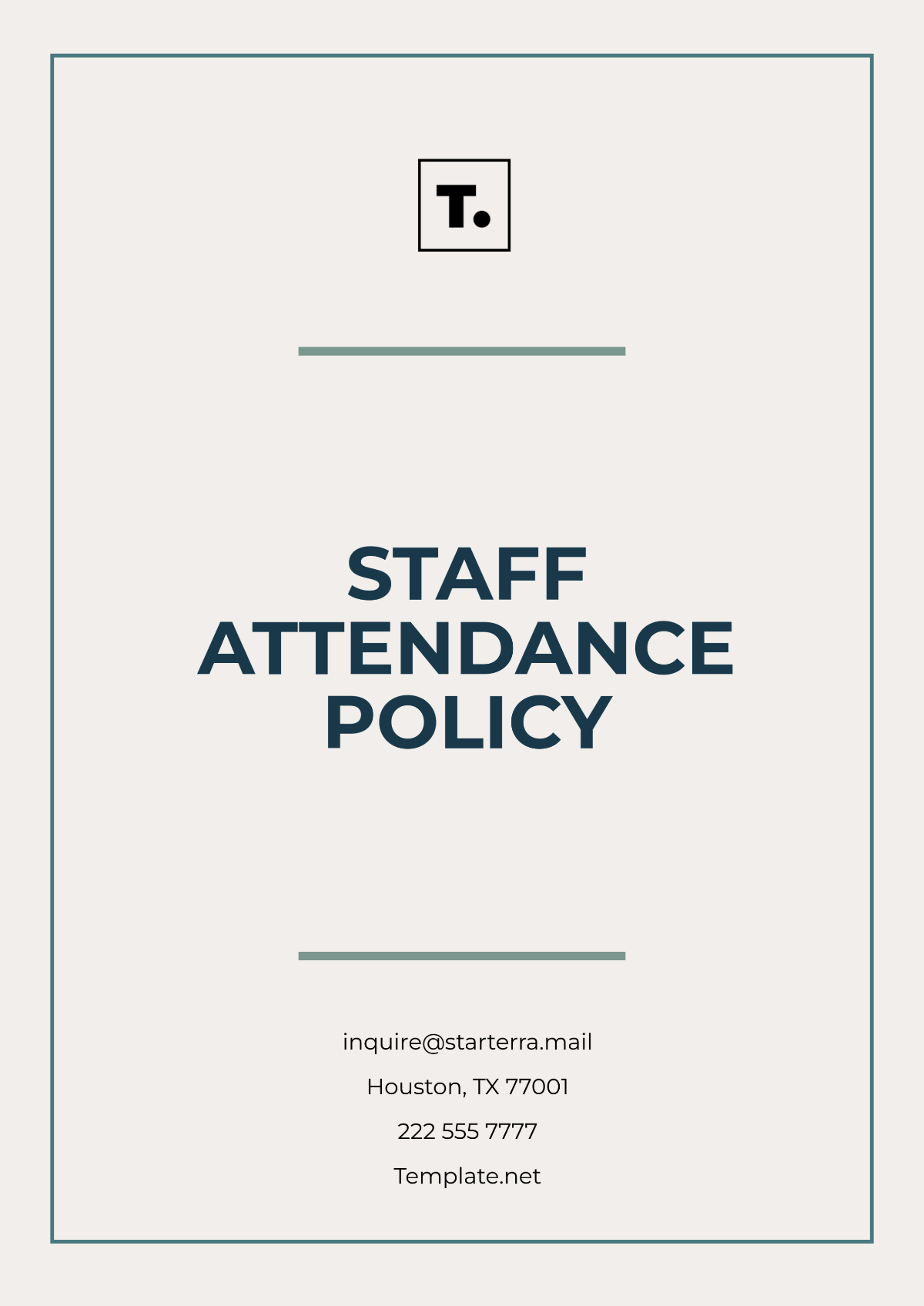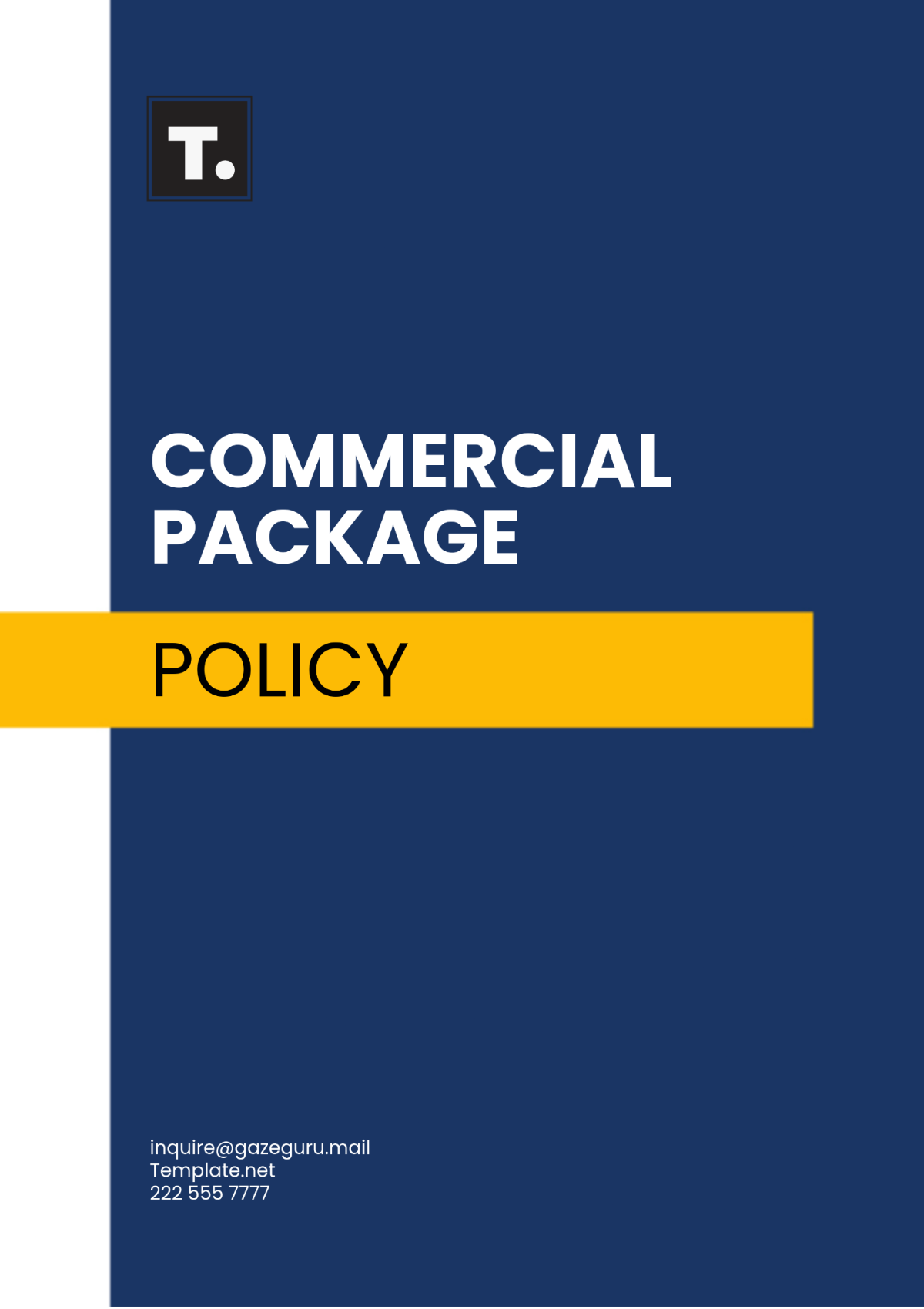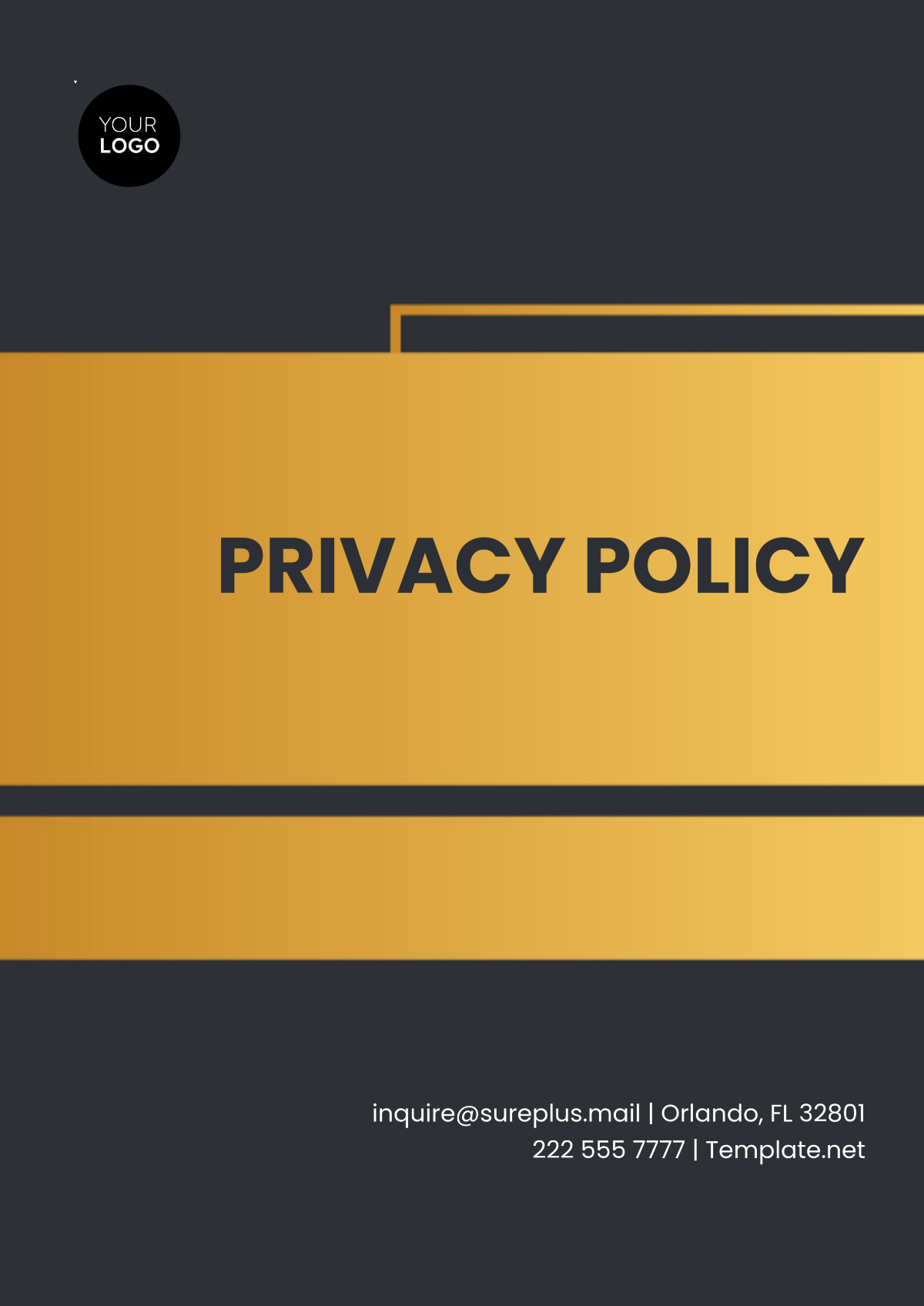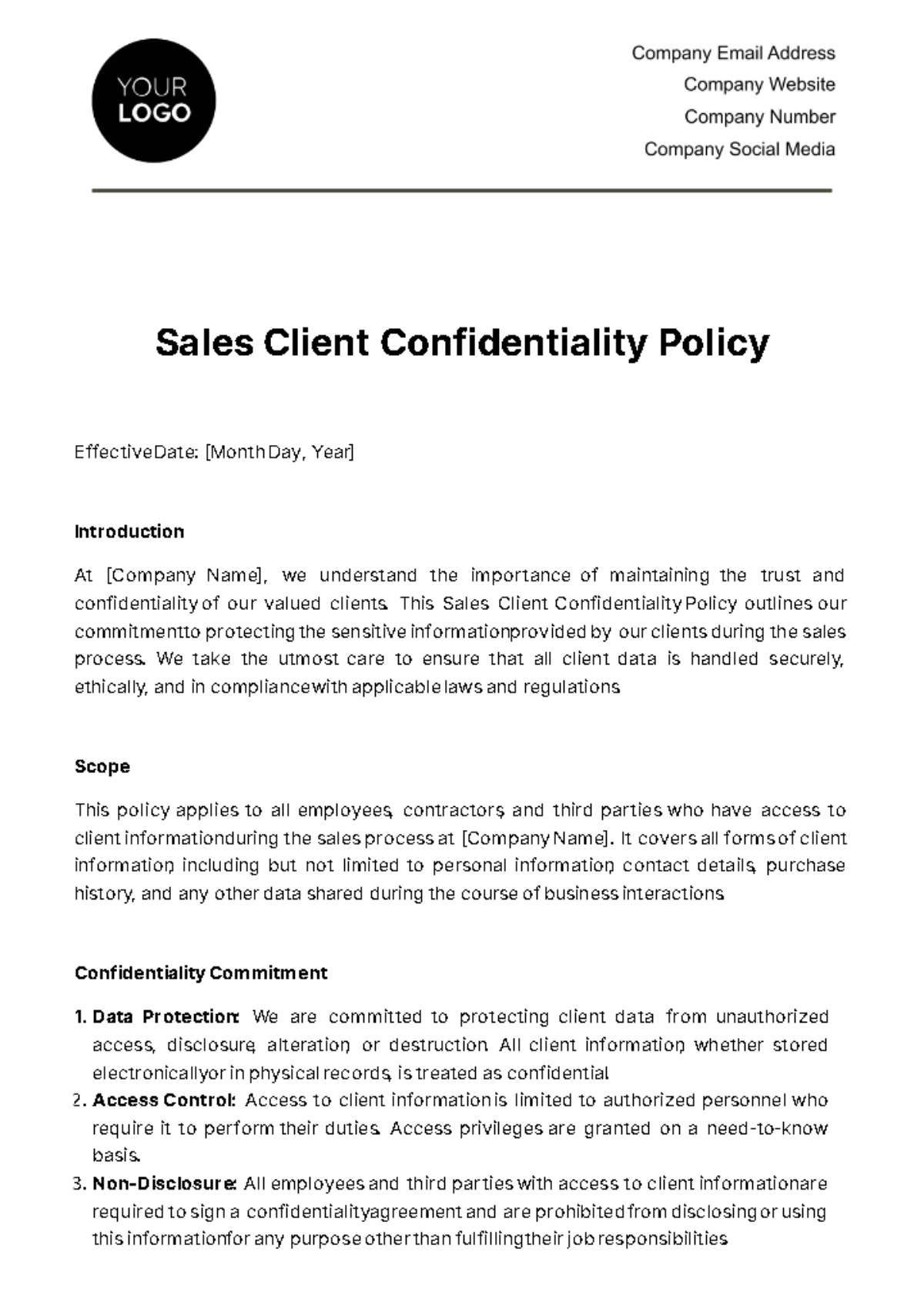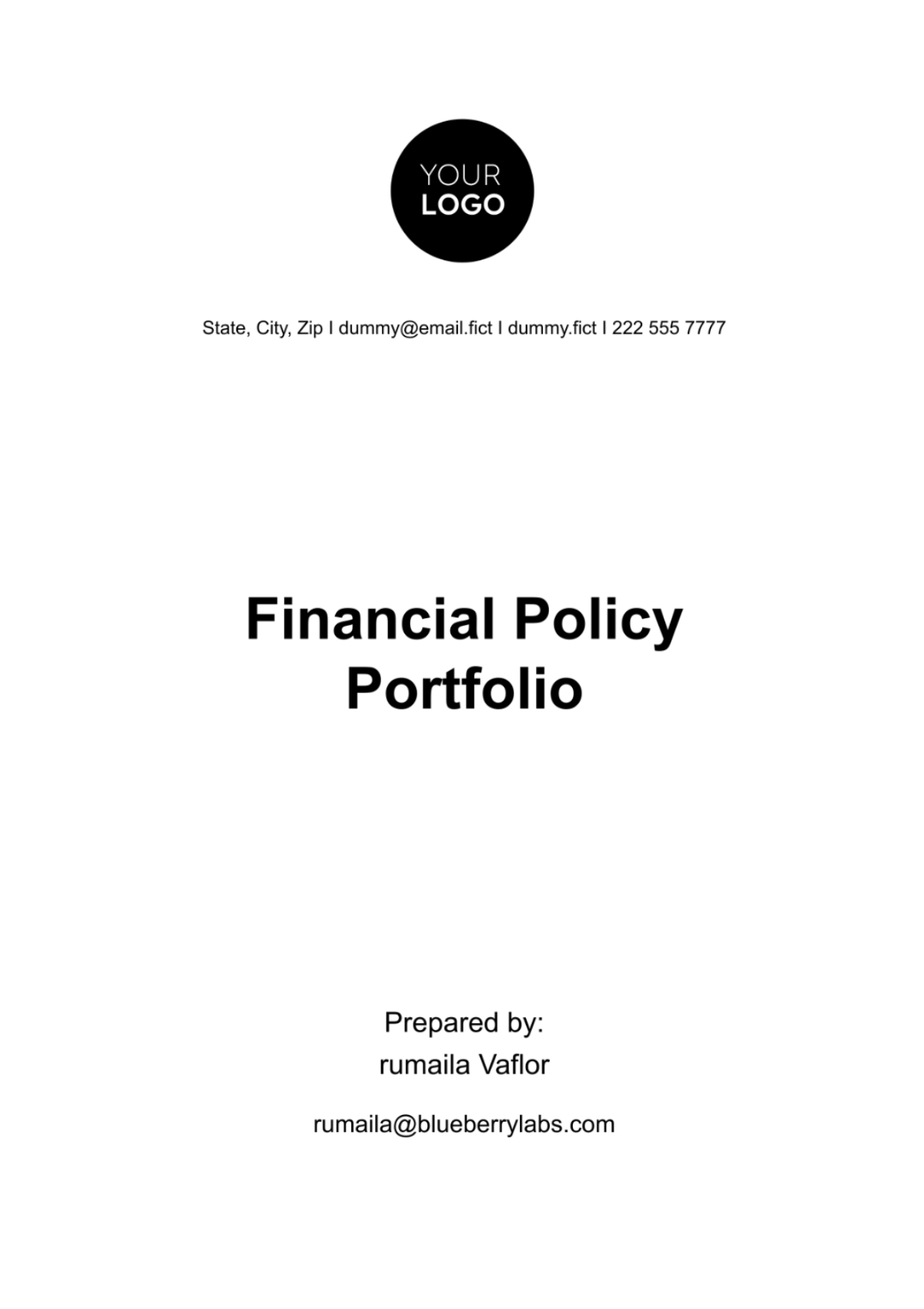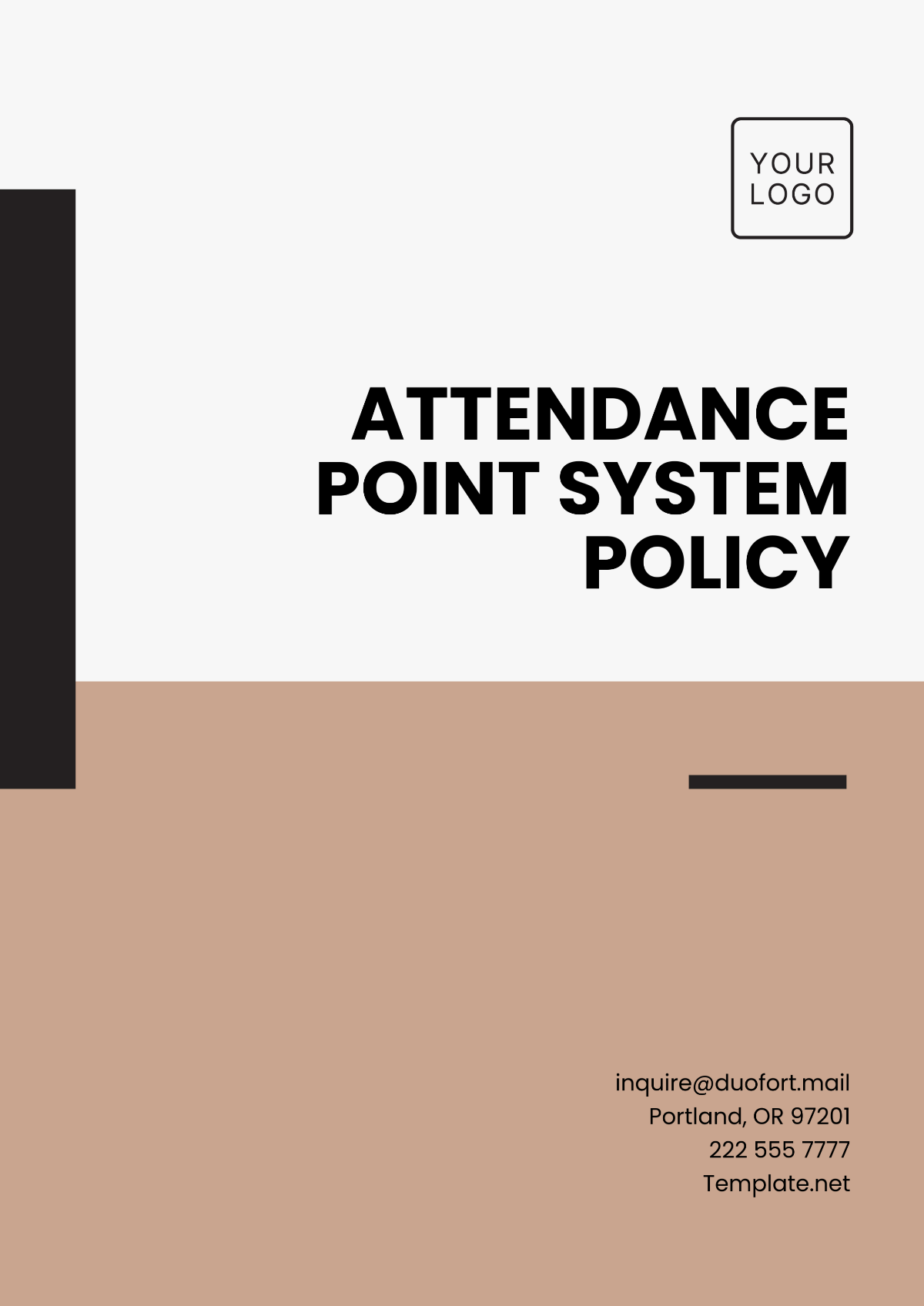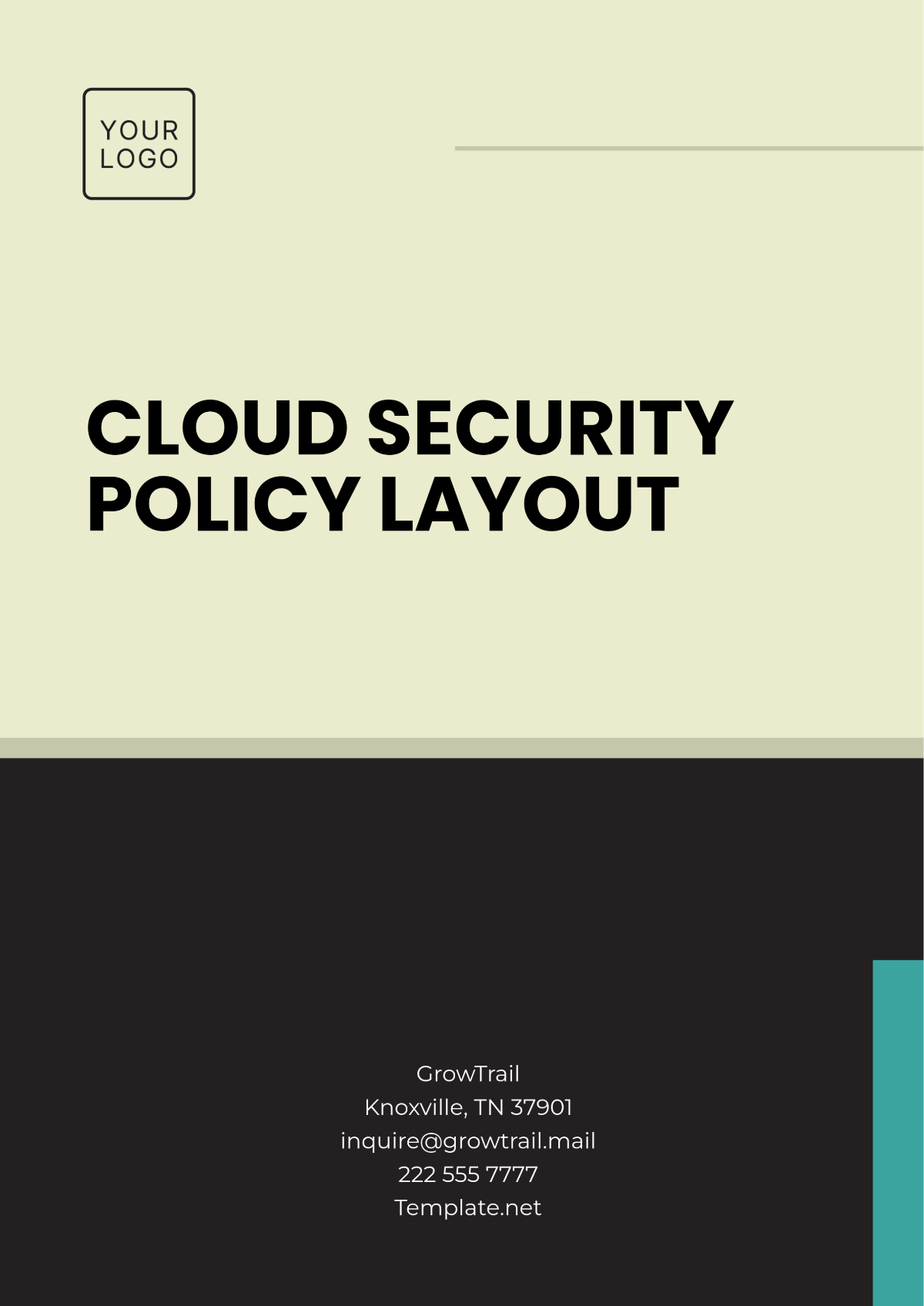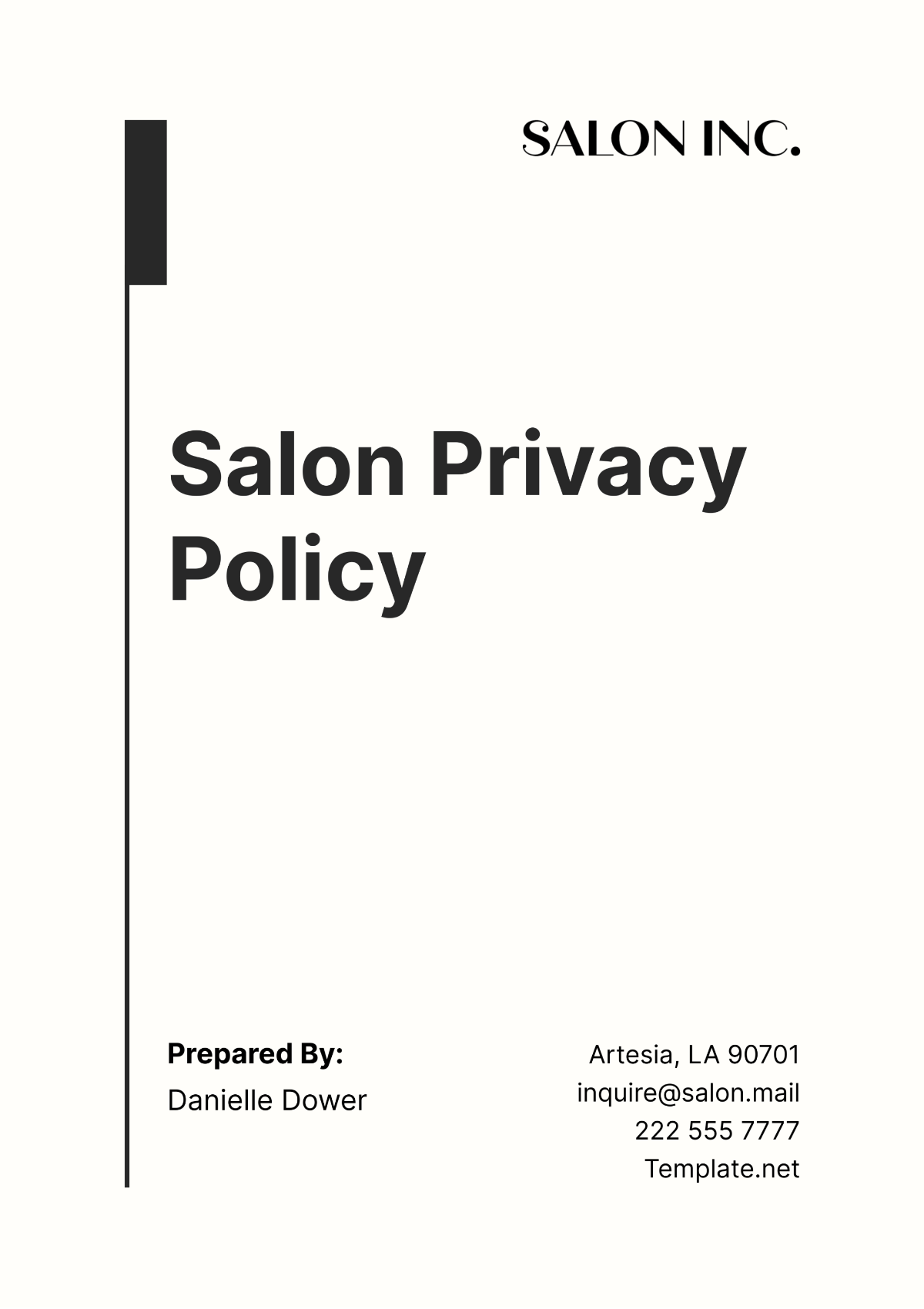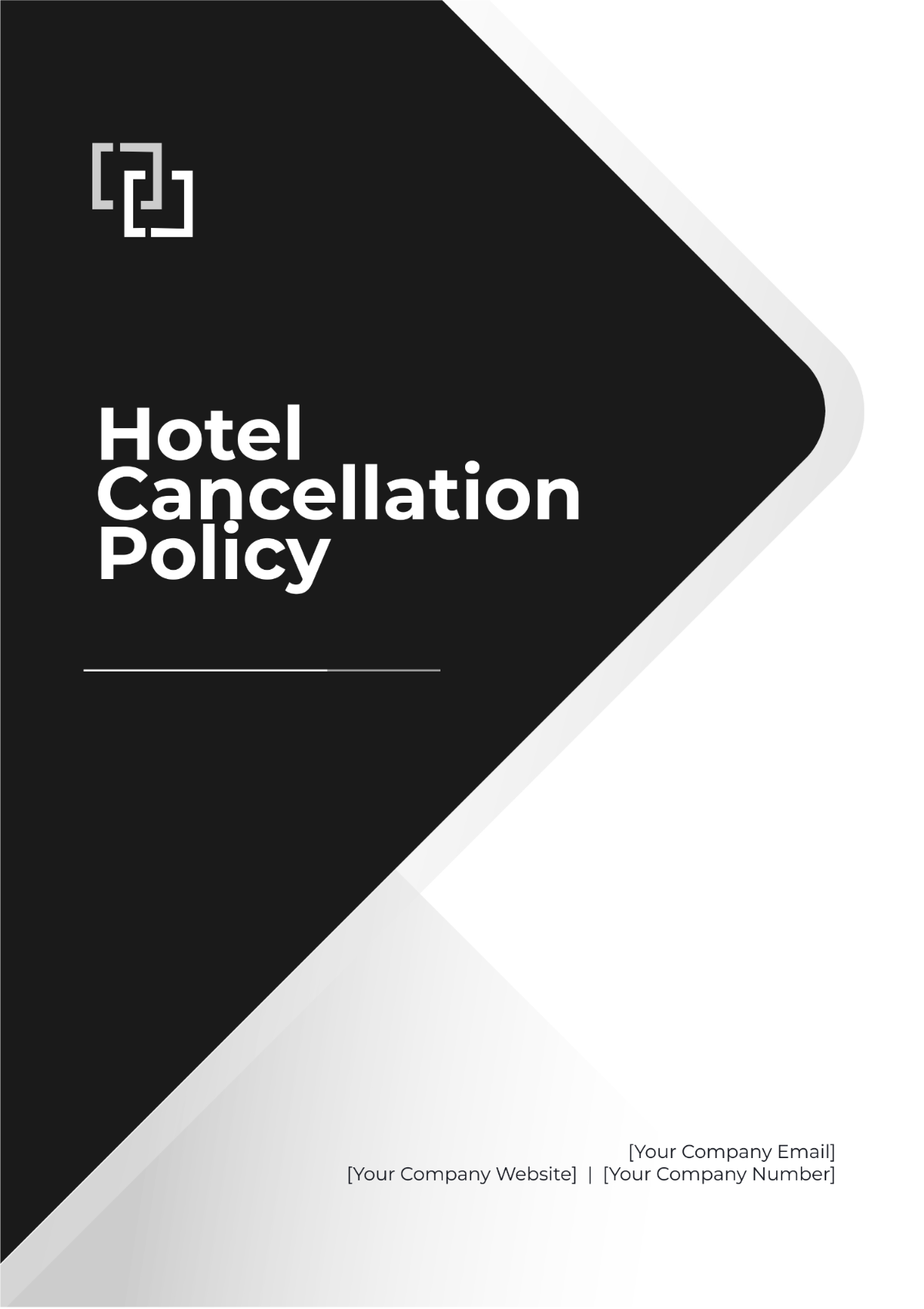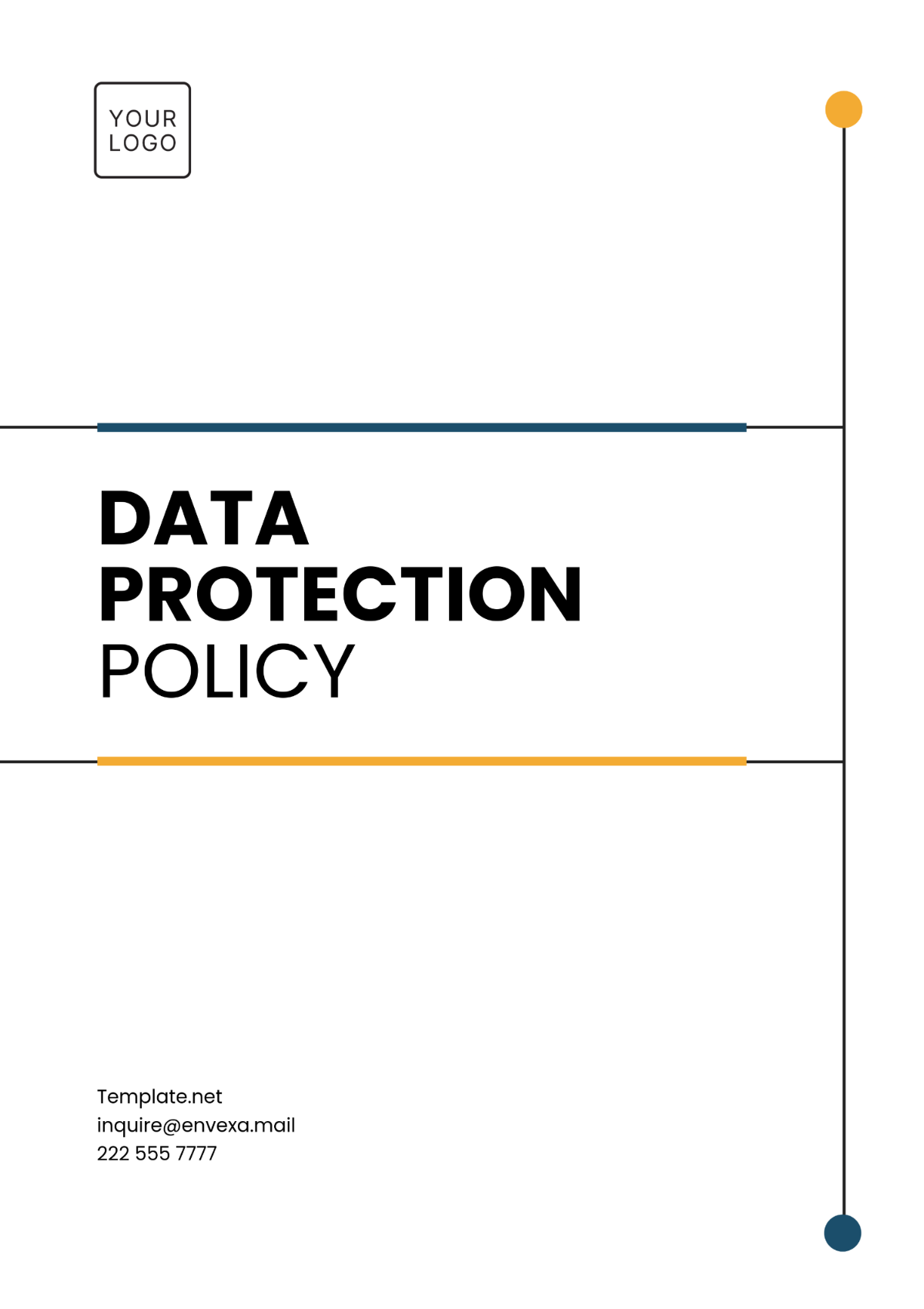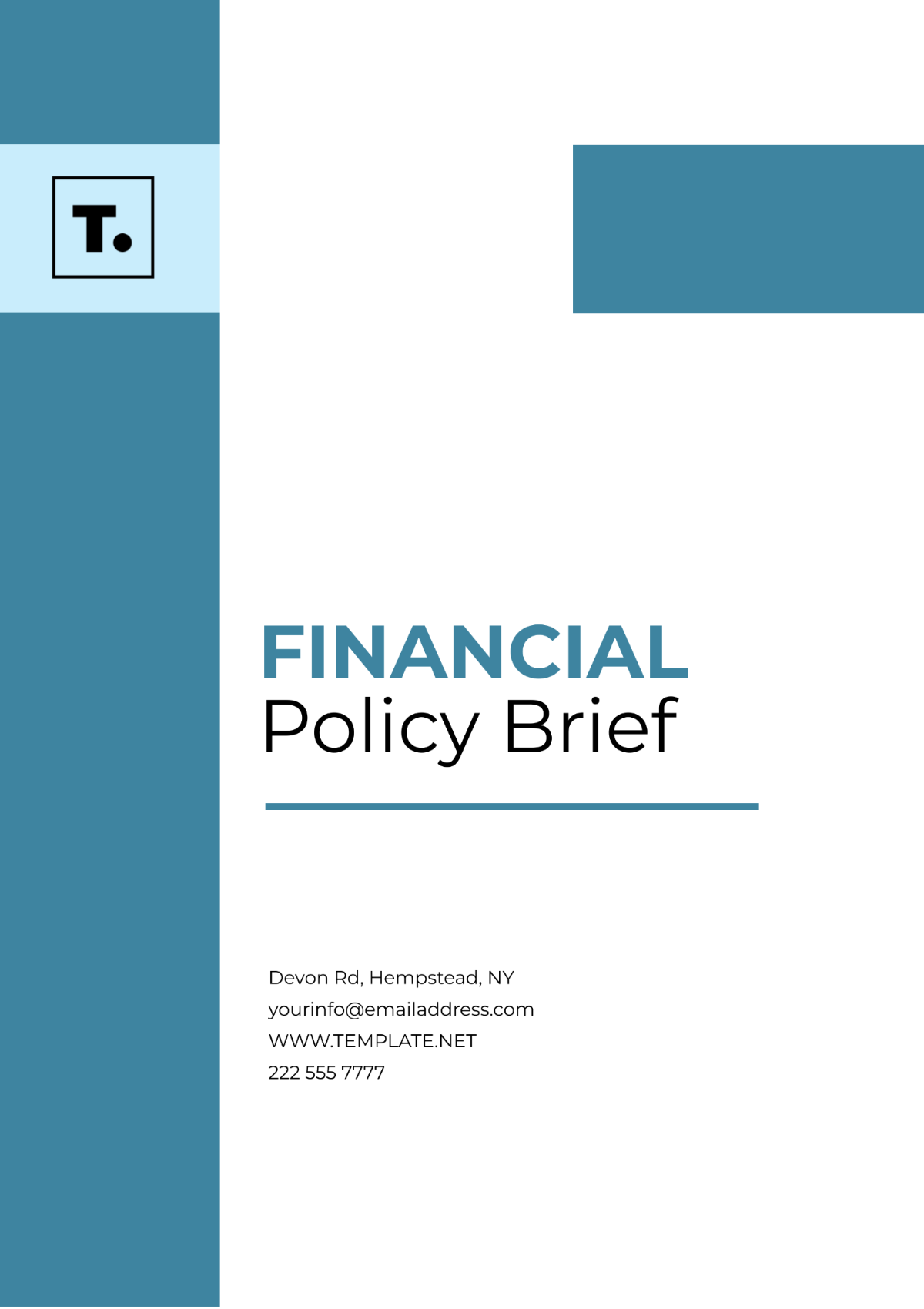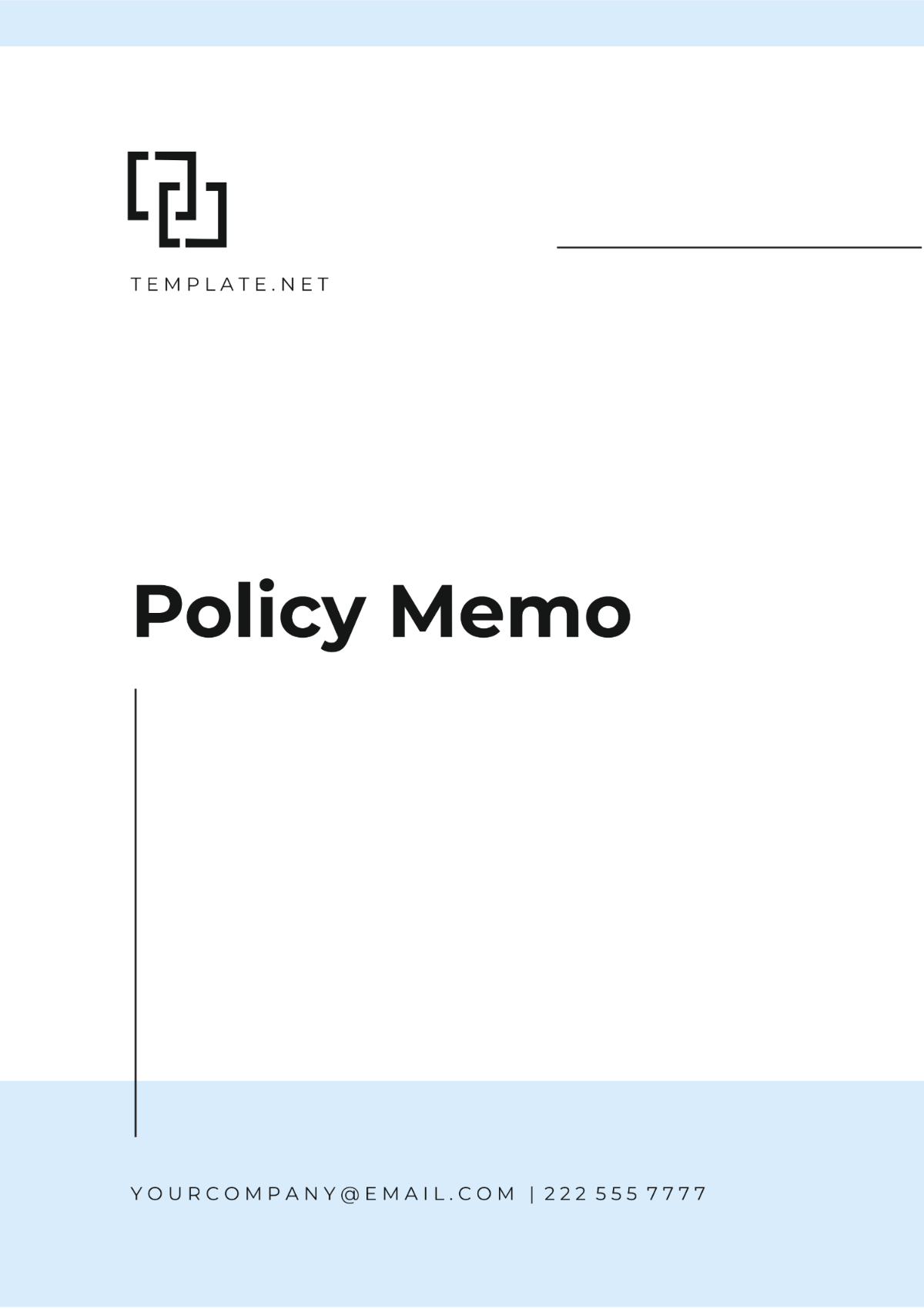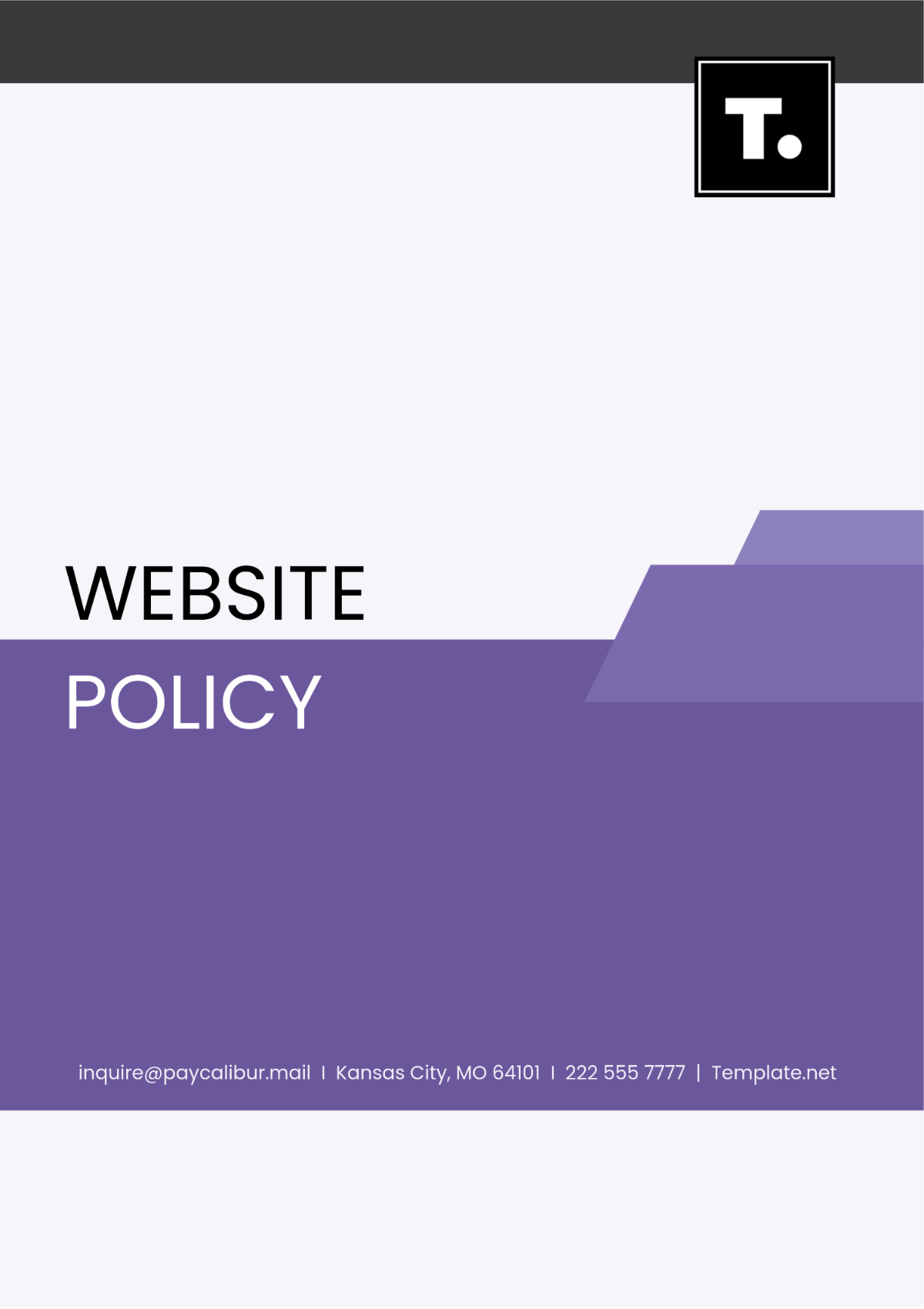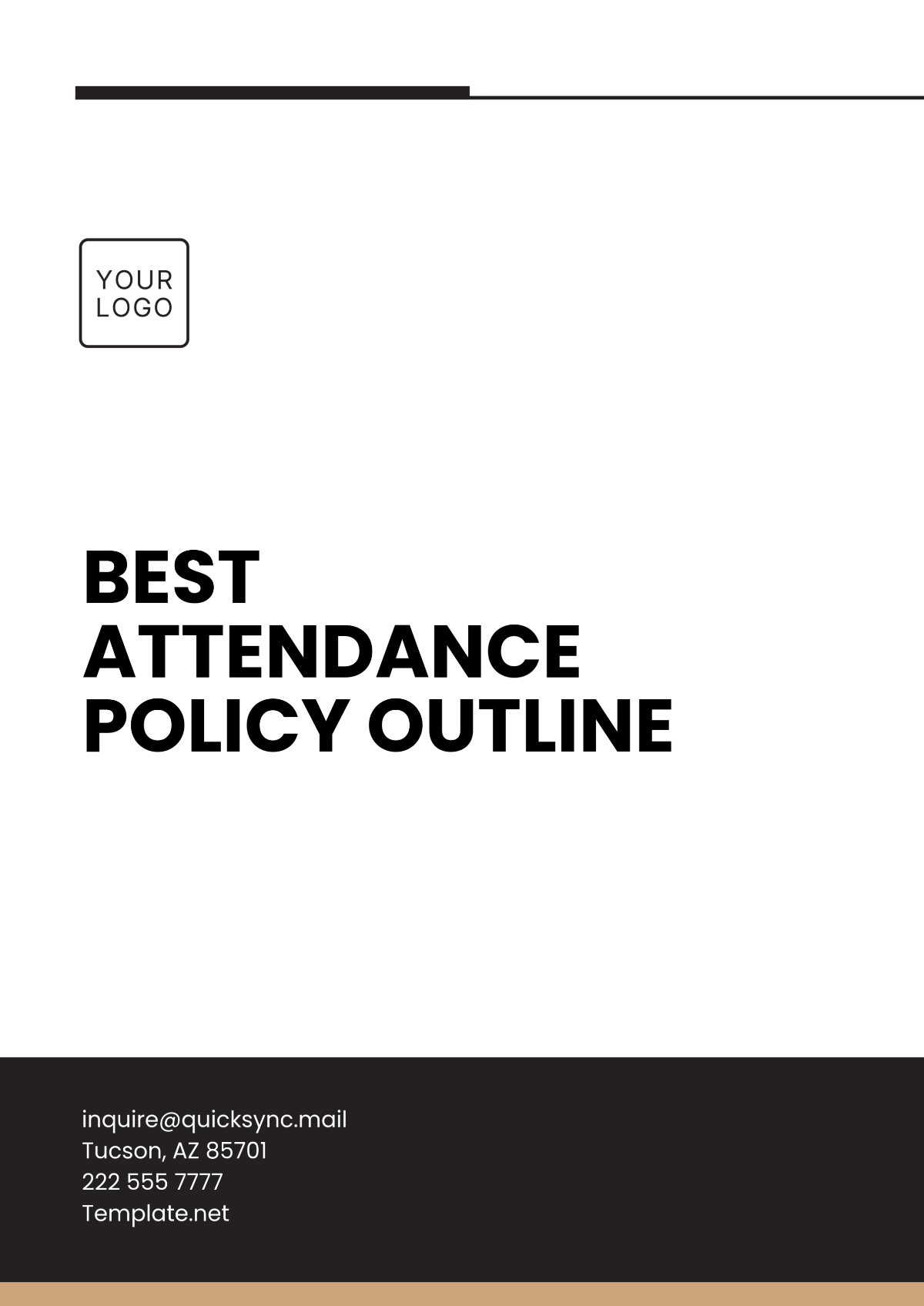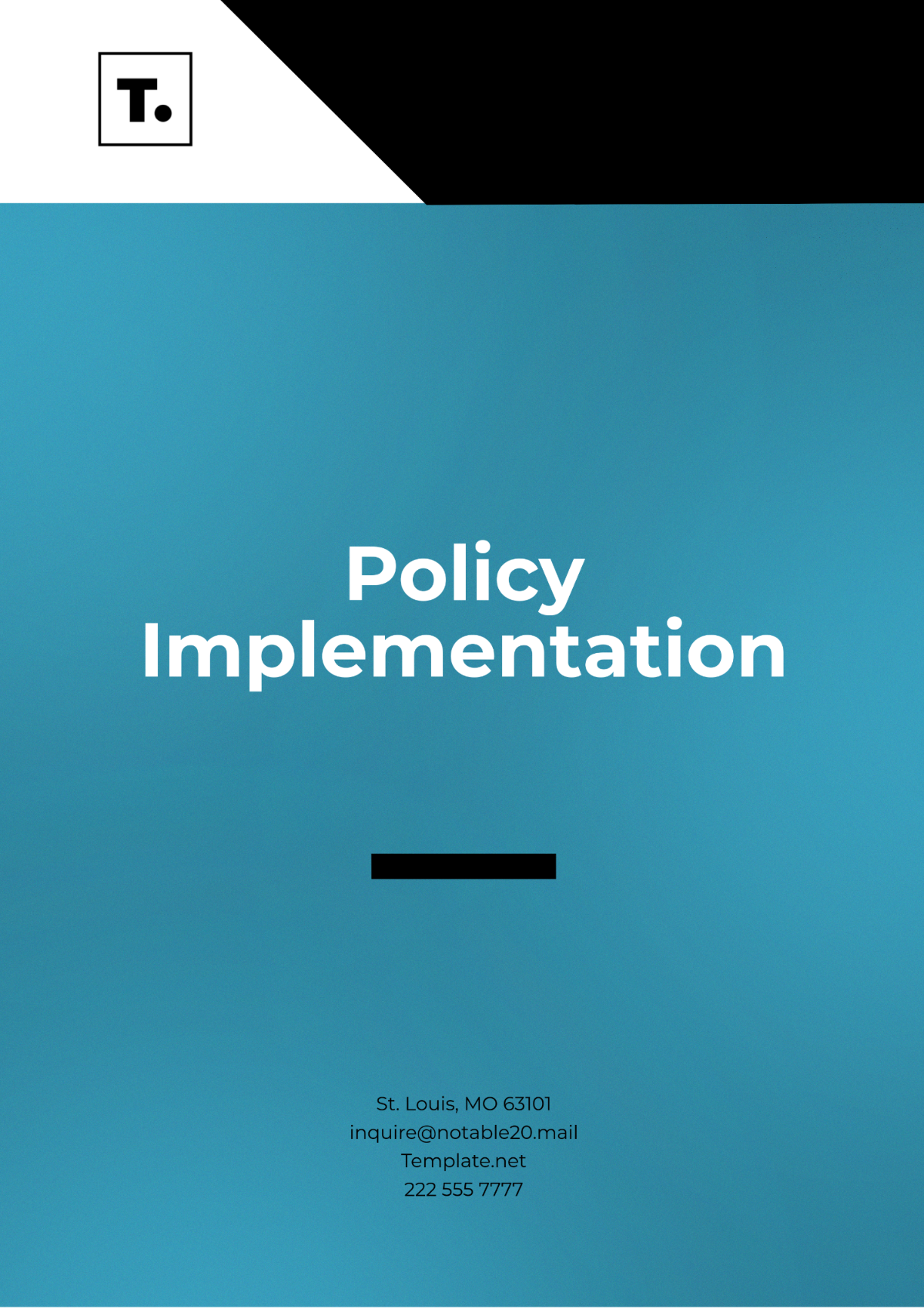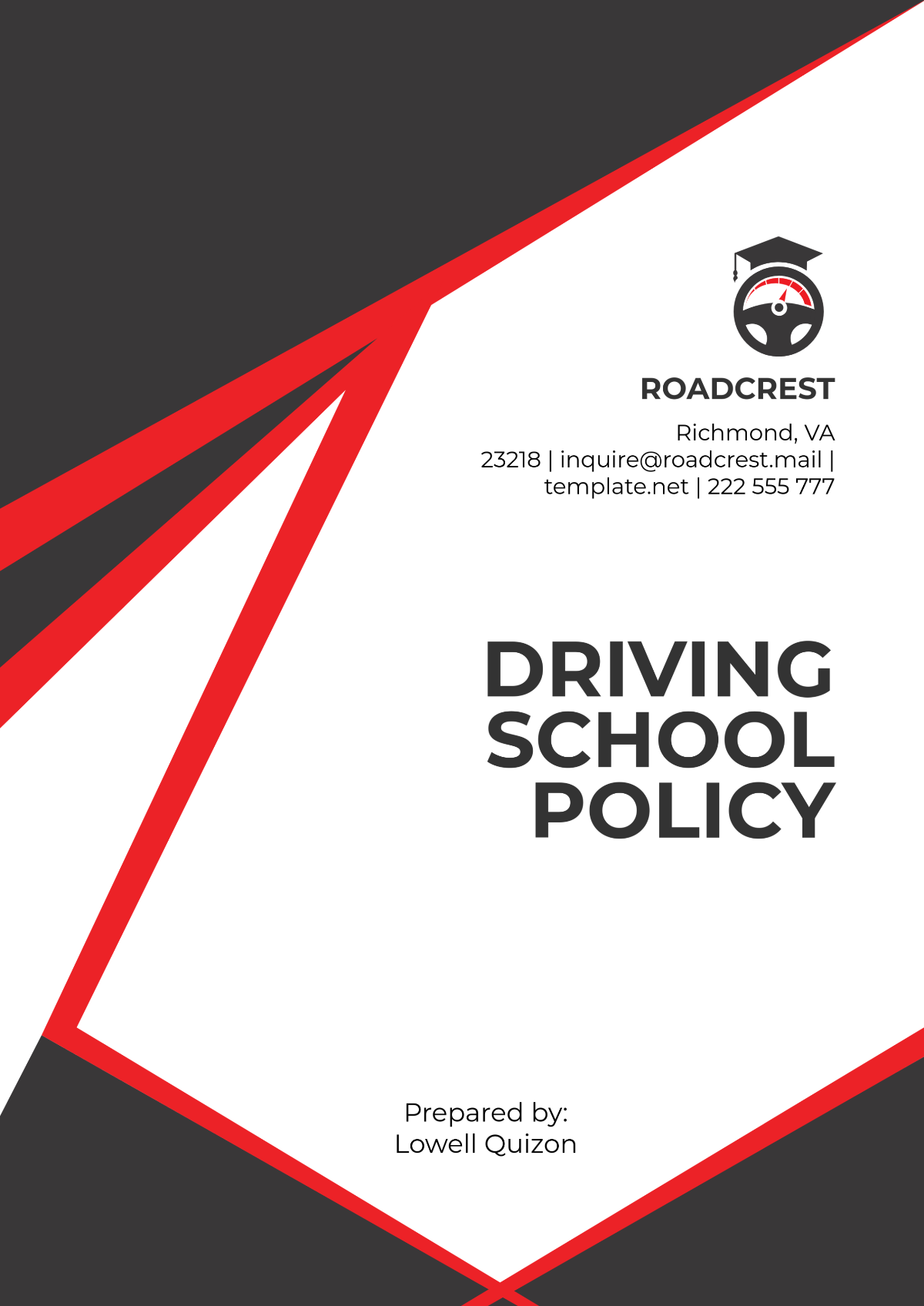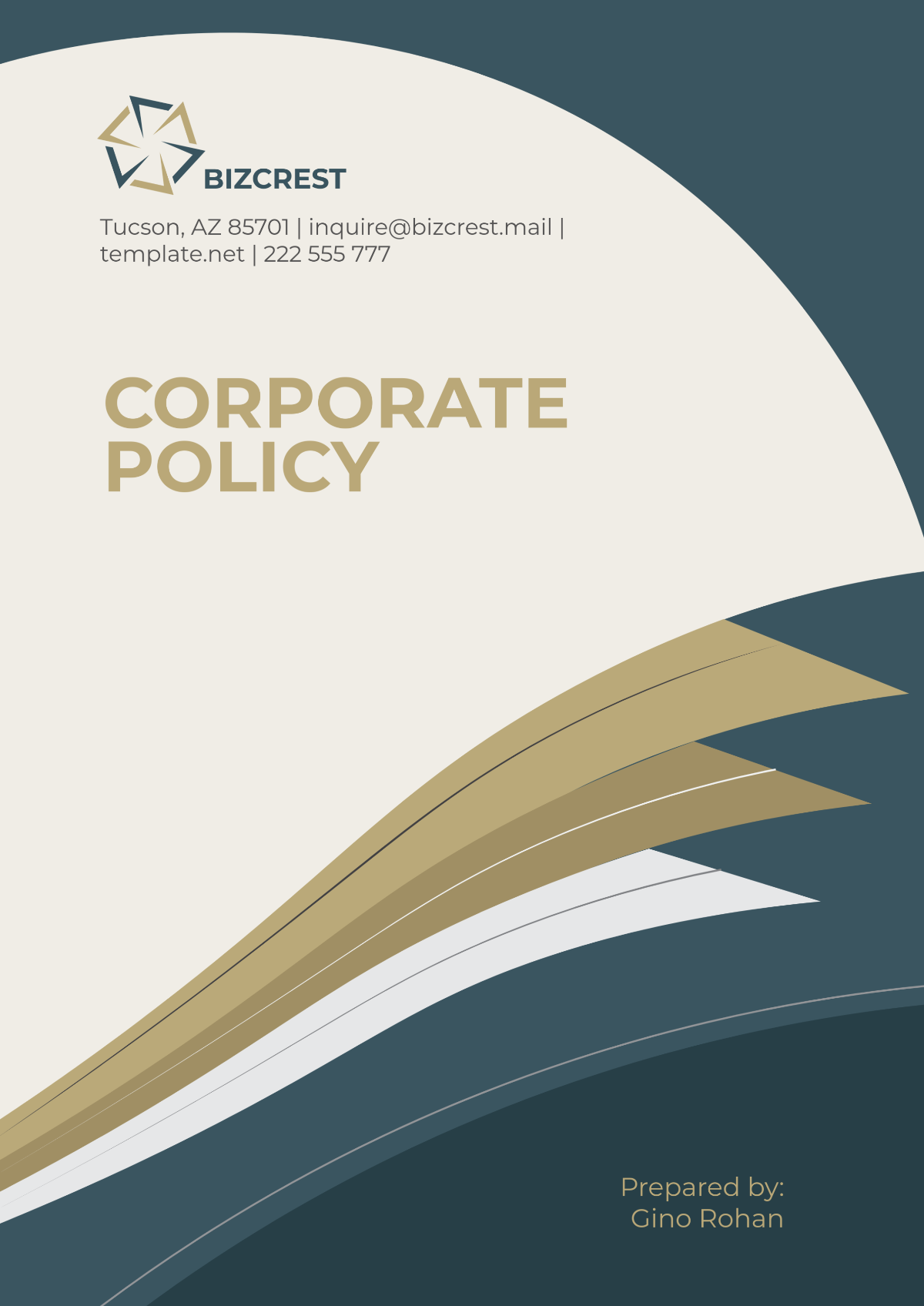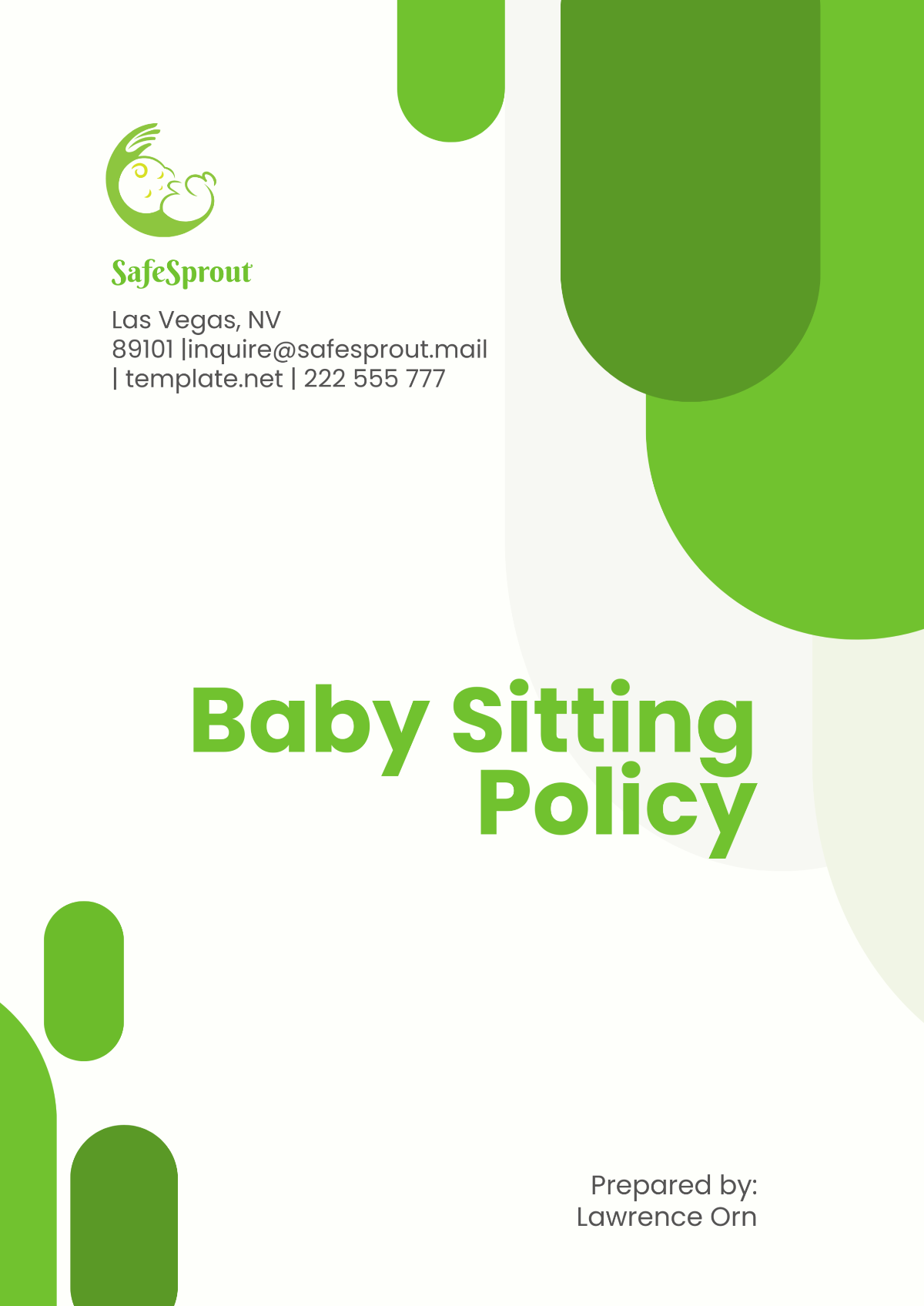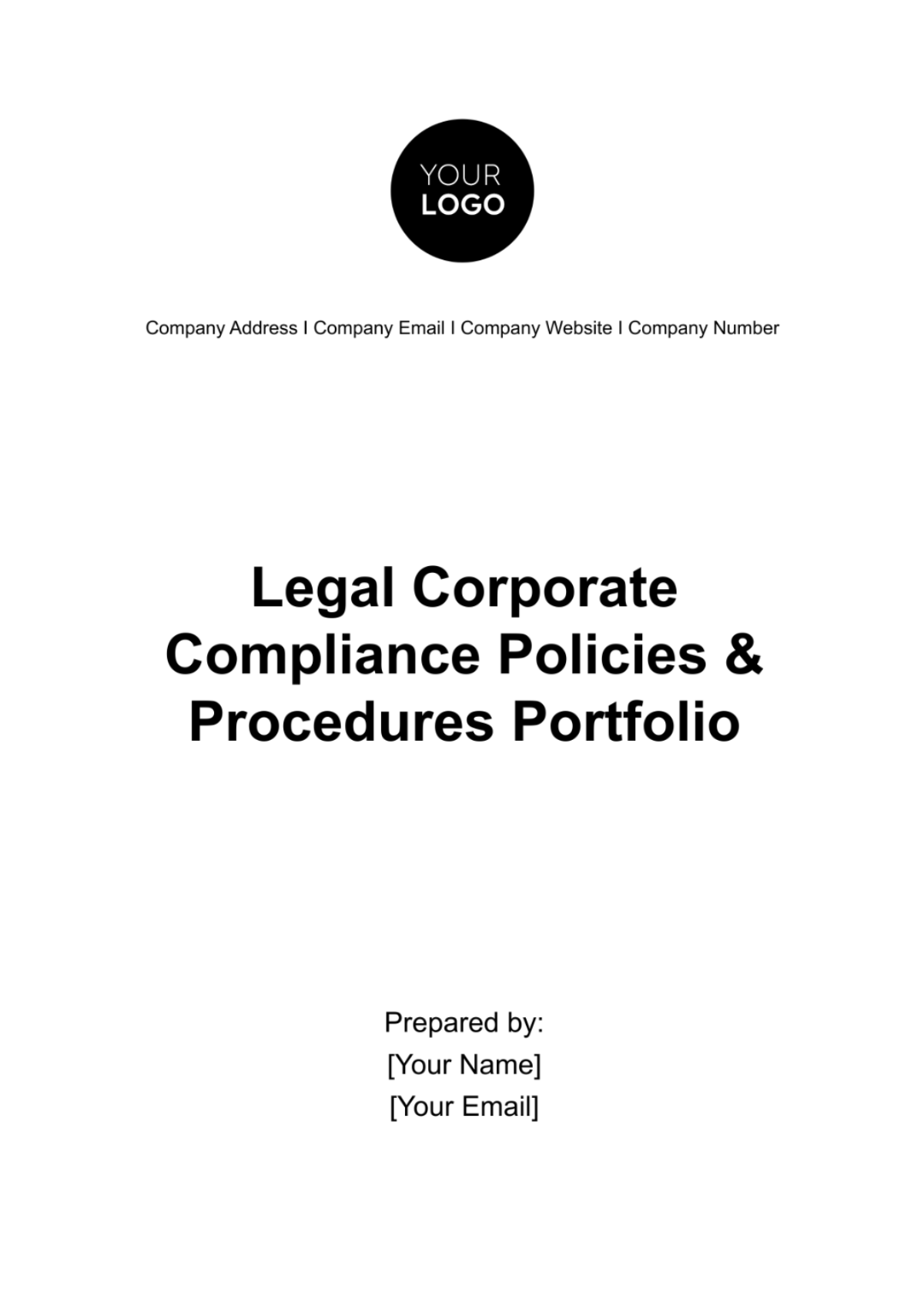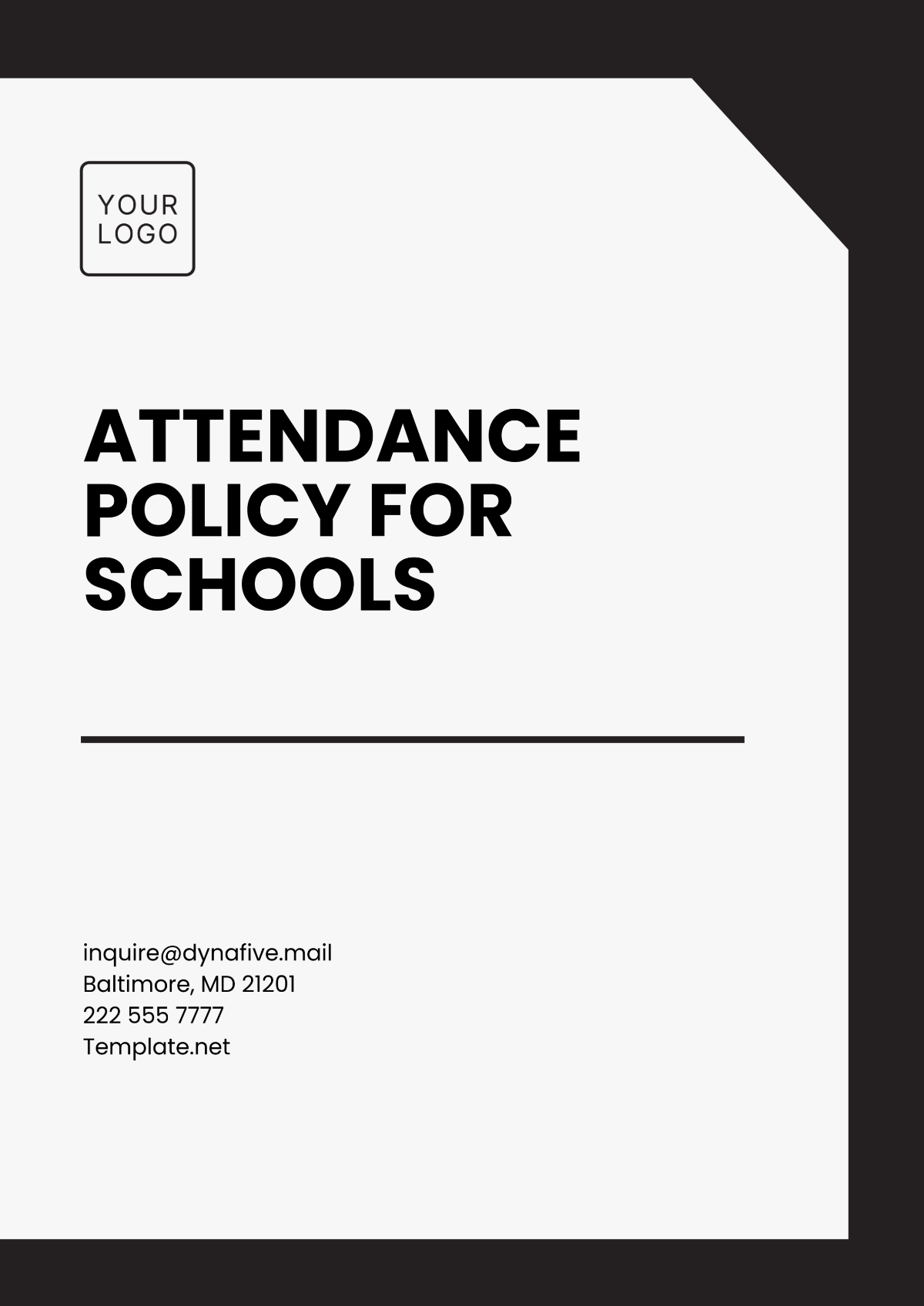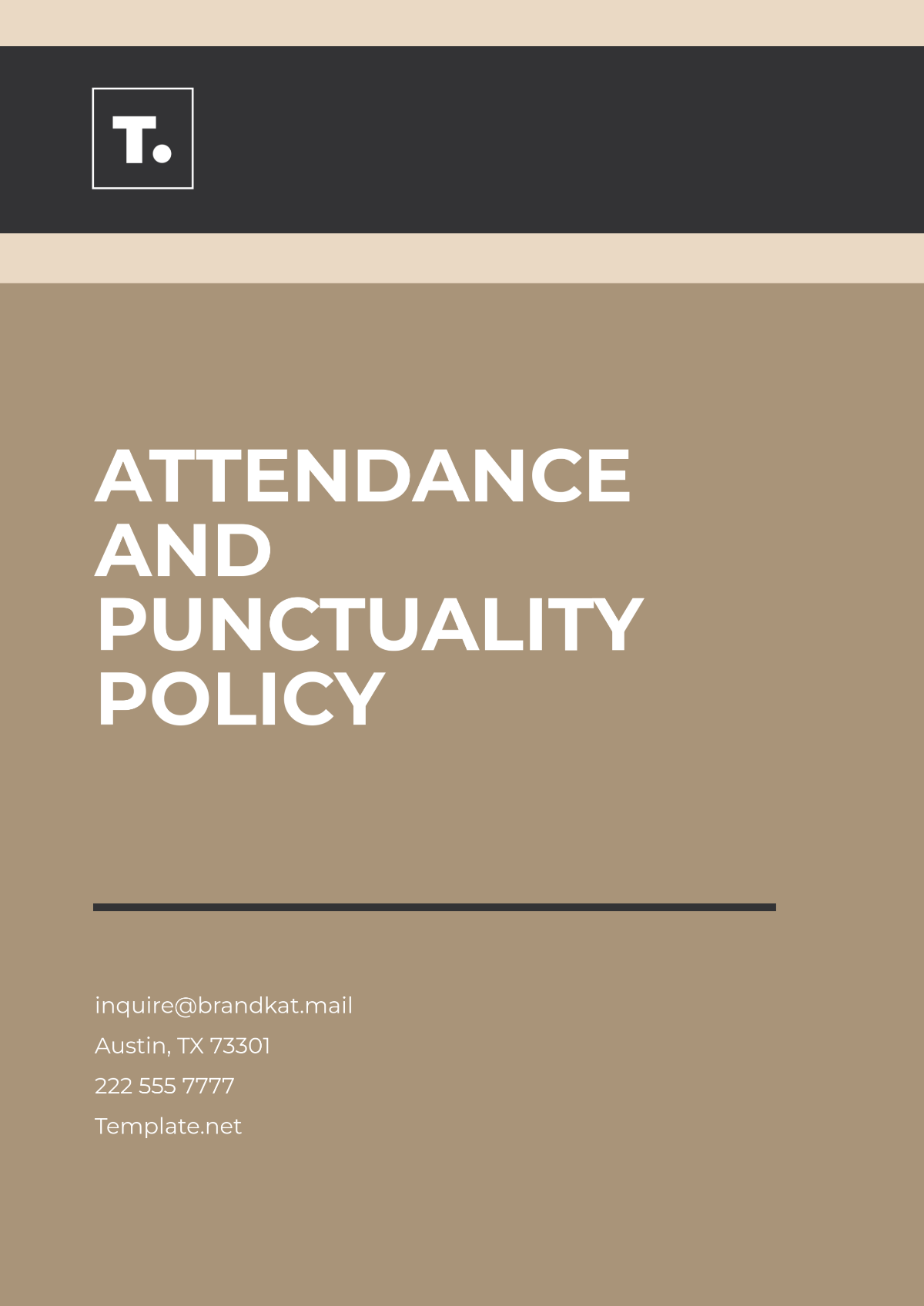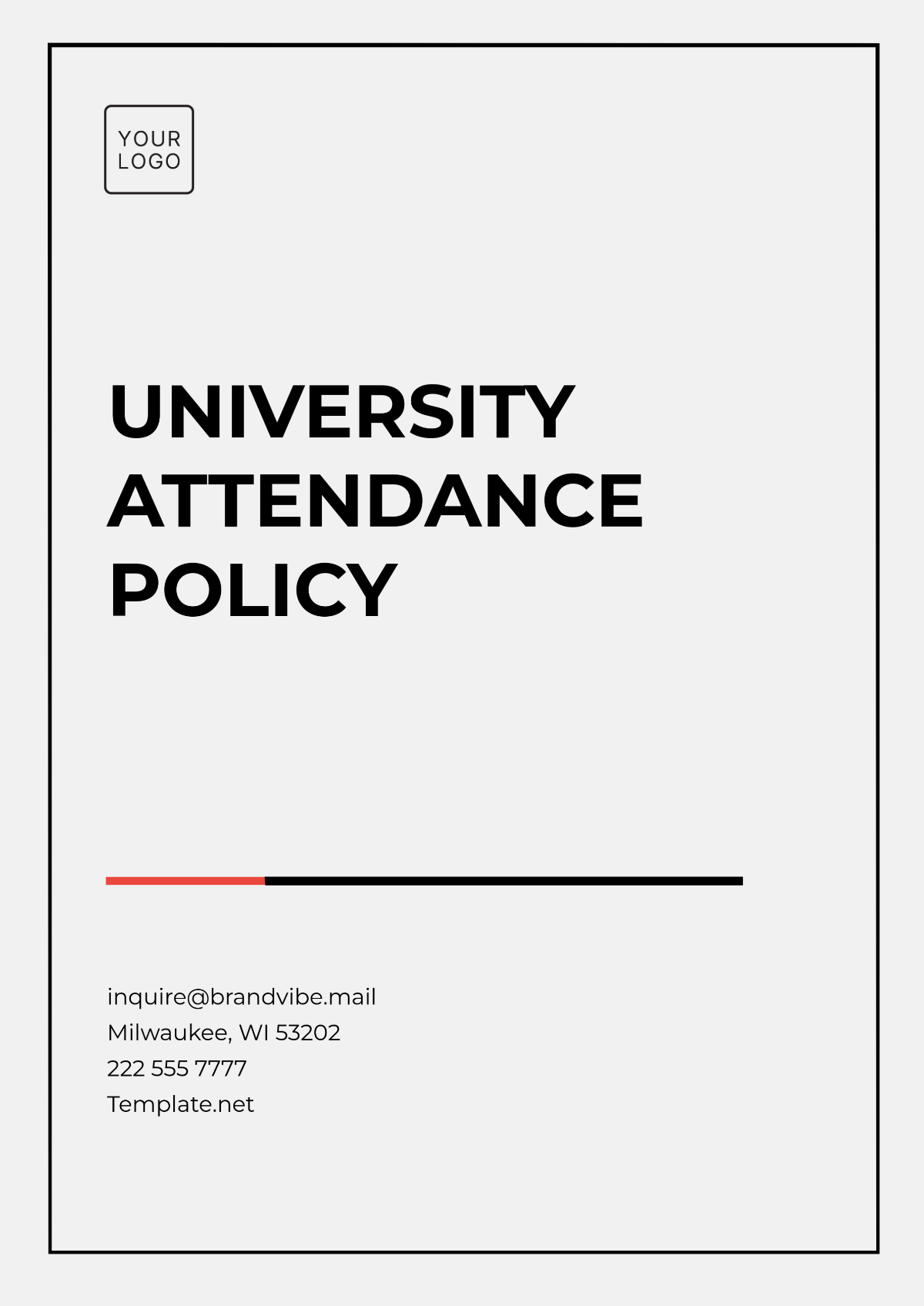Marketing Policy & Procedure for
Media Engagements
I. Introduction
Our PR strategy is not just a plan; it's a blueprint that defines how we navigate the intricate landscape of public relations. It's a dynamic framework that shapes our approach, guiding us in achieving our organizational goals. In this section, we'll dissect our PR strategy into its core elements, revealing the intricacies that make it more than just a strategy – it's our pathway to success.
A. Strategic Goals and Objectives
Our strategic goals and objectives are not mere aspirations; they are the North Star that guides our PR efforts. We don't just set goals; we set ambitious targets that push our boundaries. Whether it's enhancing brand visibility, building positive relationships, or responding to challenges, each objective is a pillar that supports our overarching strategy.
B. Target Audience and Stakeholders
Understanding our audience is not a casual endeavor; it's the foundation of effective PR. We don't just identify target audiences; we prioritize them, recognizing their unique needs and expectations. From customers to investors and influencers, each stakeholder is a piece of the puzzle of our strategy.
C. Key Messaging and Brand Consistency
In PR, messaging is not just words; it's the soul of our communication. We don't just craft messages; we sculpt them to align seamlessly with our brand identity. Consistency is not a buzzword; it's the thread that weaves our brand's story across all channels, ensuring a harmonious narrative.
D. Media Relations and Communication Channels
Media relations are not just transactions; they are relationships built on trust and mutual benefit. We don't just engage with the media; we provide them valuable resources through media kits, press releases, and outreach. We nurture relationships with journalists and influencers, recognizing their role as conduits for our brand's message.
E. Crisis Communication Procedures
Crisis communication is not just a contingency plan; it's our readiness to weather the storm. We don't just react to crises; we respond swiftly and effectively, armed with designated spokespeople and clear messaging. Our crisis communication is not just reactive; it's a proactive strategy to protect our brand's reputation.
F. Social Media Engagement Guidelines
In the digital age, social media is not just a platform; it's an arena where our brand personality shines. We don't just engage on social media; we do so responsibly, adhering to our brand's tone and values. Our guidelines for social media engagement are not just rules; they are a compass that steers us toward meaningful interactions.
G. Content Creation and Distribution
Content is not just information; it's the vehicle that carries our message to the world. We don't just create content; we craft compelling stories, utilizing various formats like articles, videos, infographics, and podcasts. Our content is not just creation; it's a strategy for engaging our target audiences.
In this section, we've unveiled the layers of our PR strategy, showing that it's not just a strategy; it's the essence of our approach to public relations. It's a dynamic, multifaceted framework that guides our actions, ensuring that each interaction is meaningful and aligned with our organizational objectives.
II. Media Engagement Guidelines
In the world of business, information is more than just data; it's the currency of trust and reputation. Welcome to a section that isn't just about guidelines; it's about how we harness the power of media engagement to shape narratives, foster understanding, and build lasting relationships. Here, we explore the intricacies of our media engagement strategy and the roles that guide it.
A. Media Engagement Strategy
Our media engagement strategy isn't just a plan; it's a well-orchestrated symphony that harmonizes our interactions with diverse media channels. It's not just about sharing news; it's about creating a symphony of information, updates, and insights that resonate with our audiences. In this section, we'll uncover the layers of our strategy, revealing that it's not just about interactions; it's about strategic connections.
Types of Media Interactions |
Media interactions are not just conversations; they are deliberate engagements with a purpose. We don't just interact; we choose the type of interaction that aligns with our objectives. Whether it's interviews, press releases, or expert opinions, each interaction serves a distinct role in our media engagement strategy. |
Key Messages and Target Audiences |
Our messages are not just words; they are the essence of our communication. We don't just convey messages; we carefully select key messages that resonate with our brand identity. Our messages aren't just for anyone; they are tailored to specific target audiences. From customers to industry experts, each audience receives a message that speaks directly to their needs and interests. |
B. Spokesperson Roles and Responsibilities
Spokespersons are not just individuals; they are the voices of our brand. In this section, we define not just roles but the essence of being a spokesperson for [Your Company Name]. We don't just delegate responsibilities; we define them clearly, ensuring that our spokespeople are not just representatives but true ambassadors of our brand identity.
Roles of Designated Spokespeople |
Designated spokespeople aren't just figureheads; they are our brand's frontline. We don't just assign roles; we entrust them with the responsibility of representing our brand in media interactions. Each spokesperson is not just a speaker; they are a strategic communicator with a clear purpose. |
Responsibilities in Media Interactions |
Responsibilities aren't just tasks; they are the pillars of effective communication. We don't just outline responsibilities; we specify them, ensuring that each spokesperson knows their role in the media engagement process. From message delivery to aligning with our brand identity, each responsibility is not just a duty; it's a commitment to excellence. |
C. Media Training and Preparation
Training isn't just a formality; it's an investment in our spokespersons' abilities. In this section, we delve into the essence of media training, emphasizing that it's not just about skill development; it's about honing the craft of communication.
Enhancing Communication Skills |
Communication skills aren't just attributes; they are tools for effective engagement. We don't just provide training; we enhance communication skills, equipping our spokespersons with the ability to convey messages with impact and clarity. |
Message Delivery and Crisis Management |
Message delivery isn't just a task; it's an art. We don't just train in message delivery; we prepare our spokespersons to excel in crisis management. It's not just about handling crises; it's about turning challenges into opportunities for effective communication. |
D. Messaging and Brand Consistency
Messages aren't just words; they are the building blocks of our brand identity. In this section, we explore the significance of maintaining consistency in messaging, emphasizing that it's not just about words; it's about crafting a narrative that aligns with our brand's essence.
Consistent Key Messages |
Consistency isn't just a principle; it's the backbone of our messaging. We don't just aim for consistency; we ensure that key messages resonate across all media interactions. Our messages aren't just words; they are a harmonious chorus that tells the story of our brand. |
Adherence to Brand Guidelines |
Brand guidelines aren't just rules; they are the canvas on which our brand is painted. We don't just set guidelines; we insist on adherence. All media materials aren't just documents; they are reflections of our brand, adhering to a set of principles that define our visual and verbal identity. |
E. Crisis Communication Procedures
In the world of media, crises aren't just challenges; they are opportunities to demonstrate resilience and transparency. In this section, we don't just establish procedures; we outline a roadmap for effective crisis communication.
Procedures for Media Inquiries |
Procedures aren't just protocols; they are the framework for response. We don't just have procedures; we ensure that they are clear and actionable. When crises hit, our procedures aren't just guidelines; they are a compass that points to effective media engagement. |
In this section, we've illuminated the facets of our media engagement guidelines, revealing that it's not just about rules; it's about principles that guide our interactions with media channels. It's a strategic dance where every step is deliberate, every word intentional, and every spokesperson is a guardian of our brand's identity.
III. Media Interaction Protocol
In the ever-evolving landscape of media engagement, our approach isn't just about interaction; it's about setting clear protocols that guide our every step. Welcome to the heart of our media engagement guidelines, where we delve into the intricacies of how we engage with the media. Here, we establish not just guidelines; we create a framework for systematic and effective media interaction.
A. Media Contact Points
Media contact points aren't just names on a list; they are the gateways to our organization's media engagement. In this section, we don't just identify contact points; we provide a roadmap to connect with them. It's not just about availability; it's about creating a bridge for seamless communication.
Designated Media Contact Points |
Designation isn't just a title; it's a role that holds the key to our media interactions. We don't just designate; we empower individuals within our organization to be the go-to contacts for media inquiries. These individuals aren't just representatives; they are the faces of our organization in the media landscape. |
Contact Information and Availability |
Contact information isn't just data; it's the lifeline of communication. We don't just list contact information; we ensure that it's readily available to the media. Availability isn't just a concept; it's a commitment to being accessible and responsive when the media seeks information. |
B. Interview Requests and Scheduling
Interview requests aren't just invitations; they are opportunities to convey our message. In this section, we don't just handle requests; we orchestrate a process that maximizes the impact of our interactions. Scheduling isn't just about setting a time; it's about creating a conducive environment for effective communication.
Handling Interview Requests |
Handling requests isn't just a task; it's a strategic approach. We don't just handle requests; we assess their relevance and alignment with our objectives. It's not just about saying yes; it's about ensuring that every interview serves a purpose in our media engagement strategy. |
Preparation and Coordination |
Preparation isn't just a formality; it's a commitment to excellence. We don't just prepare for interviews; we ensure that spokespeople are well-coached and equipped to deliver key messages effectively. Coordination isn't just logistics; it's about creating a seamless experience for both our spokespeople and the media. |
C. Handling Media Inquiries and Requests
Handling inquiries isn't just a task; it's a responsibility to provide accurate and consistent information. In this section, we don't just address inquiries; we establish a systematic approach that ensures no inquiry goes unanswered. It's not just about responding; it's about fostering trust through transparency.
Systematic Approach to Inquiries |
Systematic approaches aren't just processes; they are frameworks that streamline communication. We don't just have a system; we ensure that inquiries are categorized, prioritized, and addressed promptly. It's not just about answering questions; it's about creating a reliable channel for media inquiries. |
D. Pre- and Post-Interview Procedures
Pre-interview procedures aren't just formalities; they are the foundations of effective message delivery. In this section, we don't just outline procedures; we emphasize their significance in ensuring our spokespeople are well-prepared. Post-interview assessment isn't just feedback; it's a tool for continuous improvement.
Pre-Interview Preparation |
Preparation isn't just a checklist; it's a commitment to delivering our key messages effectively. We don't just prepare; we review messages, coach spokespeople, and ensure that every interview aligns with our objectives. It's not just about readiness; it's about excellence in media interactions. |
Post-Interview Impact and Feedback |
Post-interview isn't just a phase; it's an opportunity to evaluate our performance. We don't just move on; we assess the impact of interviews, gather feedback, and use insights for continuous improvement. It's not just about concluding an interaction; it's about learning and growing from each experience. |
E. Media Releases and Announcements
Media releases aren't just documents; they are the catalysts for news dissemination. In this section, we don't just create releases; we establish a process that ensures our media materials are not just information; they are strategic tools for building our brand's narrative.
Creating Media Releases |
Creating releases isn't just writing; it's crafting a narrative that captures attention. We don't just create; we follow approval workflows, ensuring that our releases align with our brand guidelines. It's not just about content; it's about the message we want to convey. |
Distributing Releases |
Distribution isn't just sending; it's ensuring that our releases reach the right audiences. We don't just distribute; we select the most effective channels to ensure our messages are not just disseminated; they are received and acknowledged. |
In this section, we've ventured into the core of our media interaction protocol, revealing that it's not just a set of guidelines; it's a comprehensive framework that defines how we connect, engage, and convey our.
IV. Compliance and Ethical Standards
In the realm of media engagements, integrity and adherence to ethical standards are not just principles we uphold; they are the foundation upon which we build trust and credibility. Welcome to the core of our compliance and ethical standards, where we ensure that our interactions with the media are not just ethical; they are exemplary.
A. Legal and Regulatory Compliance
Compliance with legal and regulatory requirements isn't just a necessity; it's a commitment to upholding the highest standards of professionalism in our media engagements. In this section, we don't just acknowledge legal requirements; we establish a culture of compliance that ensures our media interactions are not just lawful; they are exemplary in their adherence to all relevant laws and regulations.
Intellectual Property Compliance |
Intellectual property isn't just legal jargon; it's a fundamental aspect of respecting creative and innovative work. We don't just comply with intellectual property laws; we ensure that our media interactions respect copyrights, trademarks, and patents. It's not just about avoiding legal consequences; it's about fostering a culture of respect for intellectual property. |
Privacy and Data Protection |
Privacy isn't just a concept; it's a fundamental right that we hold in high regard. We don't just protect privacy; we safeguard sensitive information and customer data with the utmost care. Compliance with data protection and privacy regulations isn't just a requirement; it's a commitment to ethical conduct in our media engagements. |
B. Transparency and Disclosure Policies
Transparency isn't just a buzzword; it's a cornerstone of trust in our media interactions. In this section, we don't just talk about transparency; we emphasize its importance in every engagement with the media. Disclosure policies aren't just documents; they are instruments of honesty and integrity.
Clear Disclosure of Conflicts of Interest |
Conflicts of interest aren't just potential ethical pitfalls; they are areas where transparency shines brightest. We don't just disclose conflicts of interest; we make it a point to proactively and clearly disclose any affiliations, sponsorships, or paid endorsements. It's not just about following rules; it's about building trust through openness. |
C. Privacy and Data Protection
Privacy and data protection aren't just checkboxes on a compliance list; they are commitments to respecting individual rights and safeguarding sensitive information. In this section, we don't just state our commitment; we outline the steps we take to protect privacy and data when engaging with the media.
Safeguarding Sensitive Information |
Sensitive information isn't just data; it's a responsibility we take seriously. We don't just safeguard it; we ensure that all interactions with the media prioritize the protection of sensitive data. Adherence to data protection and privacy regulations isn't just a requirement; it's a reflection of our commitment to ethical conduct. |
D. Avoidance of Conflicts of Interest
Conflicts of interest aren't just potential ethical dilemmas; they are challenges we proactively address. In this section, we don't just talk about avoiding conflicts; we establish clear guidelines to prevent them among spokespersons and media relations team members.
Preventing Conflicts of Interest |
Preventing conflicts of interest isn't just about rules; it's about creating a culture of ethical conduct. We don't just rely on good intentions; we set guidelines that ensure personal interests do not compromise the integrity of our media engagements. It's not just about avoiding ethical dilemmas; it's about upholding our commitment to professionalism. |
E. Handling Sensitive or Controversial Topics
Sensitive and controversial topics aren't just challenges; they are opportunities to showcase our commitment to respectful and sensitive communication. In this section, we don't just address these topics; we provide clear protocols for handling them with the utmost sensitivity, respect, and alignment with our values.
Sensitivity and Respect in Messaging |
Sensitivity and respect aren't just words; they are guiding principles in our communication. We don't just talk about them; we ensure that our messaging when addressing sensitive or controversial topics reflects these principles. It's not just about avoiding controversy; it's about exemplifying ethical communication. |
In this section, we've ventured into the heart of our compliance and ethical standards, unveiling that it's not just about following rules; it's about embodying a culture of integrity and ethical conduct in every media interaction.
Marketing Templates @ Template.net
